Puglia, also referred to as the heel of Italy, is perhaps one of Italy’s best kept secrets. Located in southeast Italy and with over 800km of coastline, this region is the perfect combination of all the things you love about Italy but with half the crowds. It’s totally different than other parts of Italy like Lake Como, Siciliy or the Tuscany wine region, and is complete polar opposite of the Dolomites region of the north. We spent almost a week road tripping through the region and I am still swooning over our time there. From the ridiculously cute towns to tropical style beaches, to the delicious food and wine, we did everything I could have asked for.

While it’s definitely possible to visit one or two of the towns over a weekend, we wanted to spend more time exploring as much of the region as we could. This post will go into detail how I planned my itinerary, which towns I visited, and what I did. Of course, it’s likely your own timelines will differ from mine but hopefully this post will give you ideas of how to plan and inspiration for your own trip!
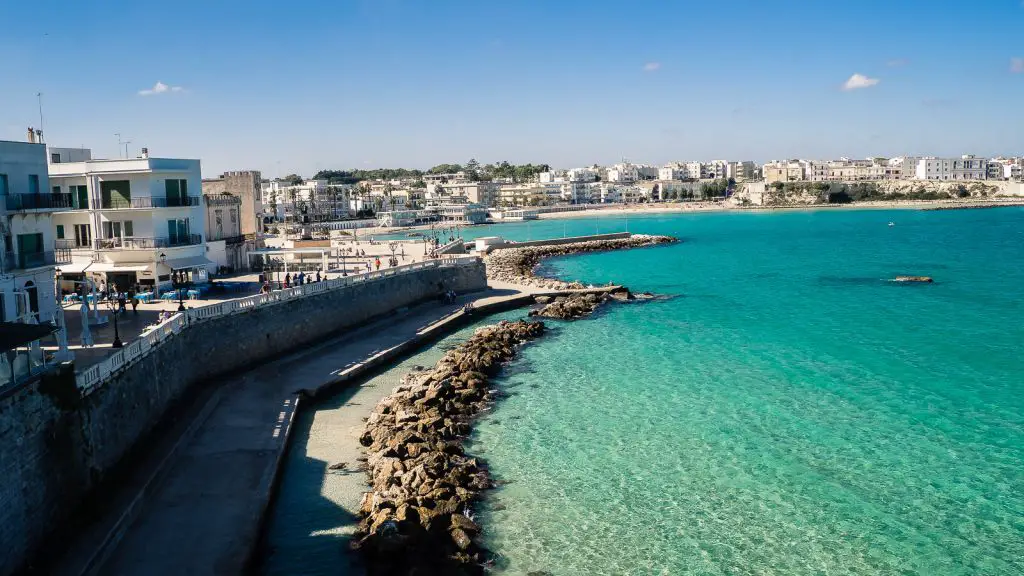
Where I went in Puglia, Italy
I had six days on my Puglia road trip and was able to see most of the places on the list. We kind of sped through many of the towns which was not ideal but there is SO much to see in Puglia that we will just have to come back and focus on the places we want to revisit.
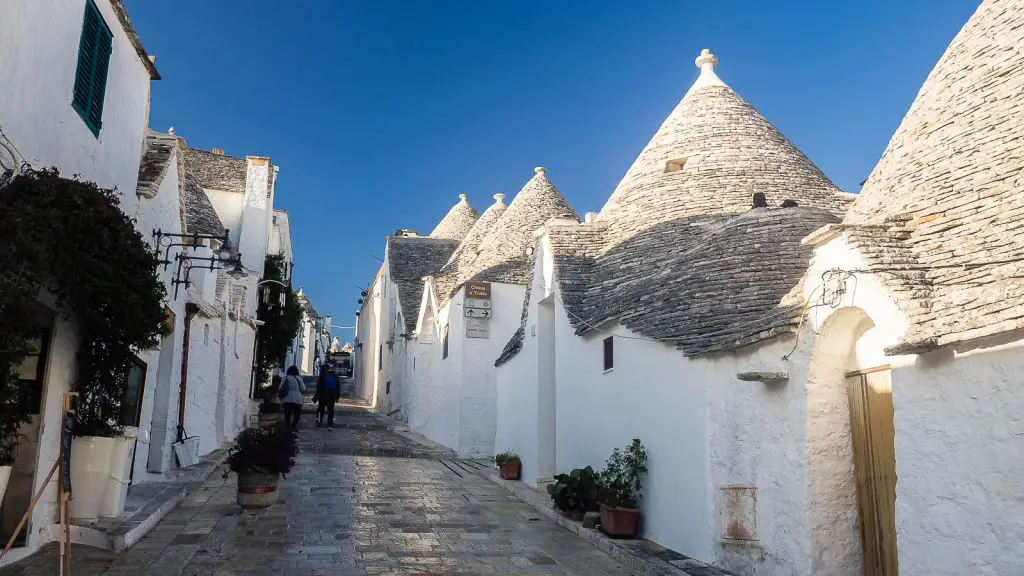
Like many places in Europe, I wanted to avoid visiting in the peak summer months when it seems like all of Europe just decides to not work. June to August are therefore no go zones. We ended up visiting in Mid-October which I think was the absolute perfect time. The days are still reasonably long, the weather was an absolute perfect mid 20s and sunny, and the crowds were few. In fact, many of the restaurants close after the summer months so we actually struggled to find restaurants at times. Nevertheless, being able to walk through Gallipoli with few tourists made it worthwhile.
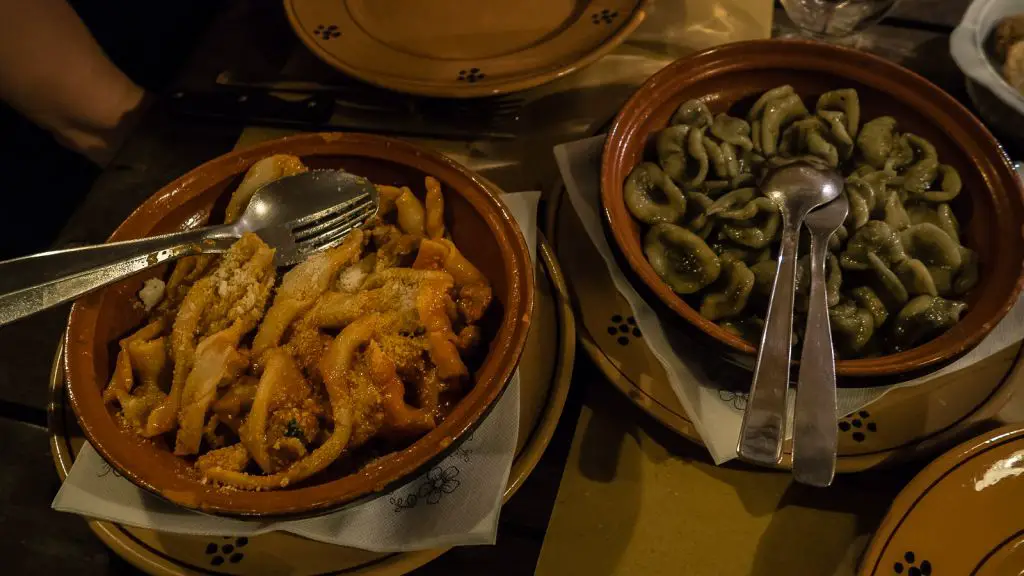
In total, this itinerary is anyone that has about a week or so to dedicate to this itinerary. Of course this itinerary can be shortened or lengthened depending on your schedule. I visited the following areas on this itinerary
- Ostuni
- Alberobello
- Matera
- Monopoli
- Polignano a Mare
- Taranto
- Gallipoli
- Otranto
- Lecce
If these places ring a bell and sound like the places you want to visit, this is the perfect itinerary for you!
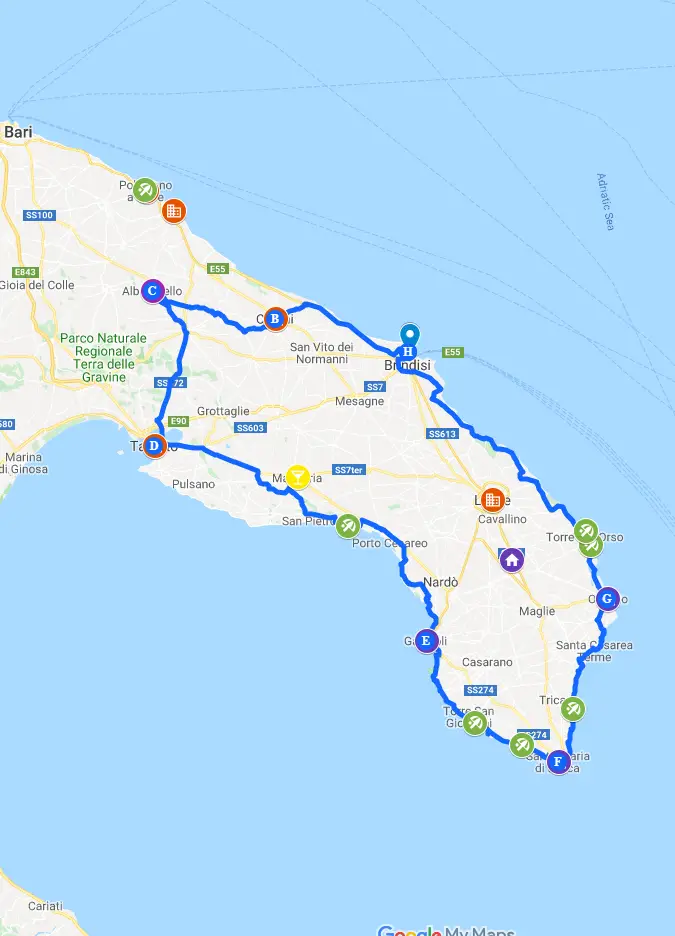
Renting a car for Puglia
Puglia is the perfect road trip destination in Italy. We took a flight from Frankfurt to Brindisi so we rented our car from the Brindisi airport. As with most of southern Europe, the prices were incredibly cheap. Because I, like many other Americans, can’t drive stick shift, I had to opt for the automatic car which ended up being almost twice as much as the cheapest manual options.
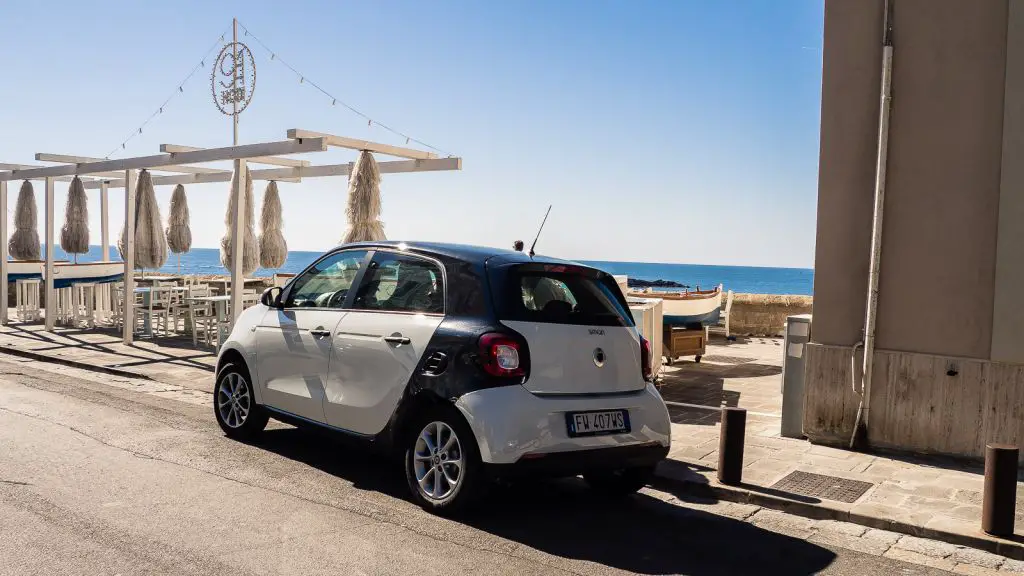
Nevertheless, it was still only €70 for a 6 day rental which I am totally okay with! We rented with Autovia which I had never heard of before. I have had some questionable experiences renting with dodgy car rental companies in Europe before but I must say that the experience with Autovia was seamless and enjoyable. They had the cheapest prices and I’d definitely rent from them again!
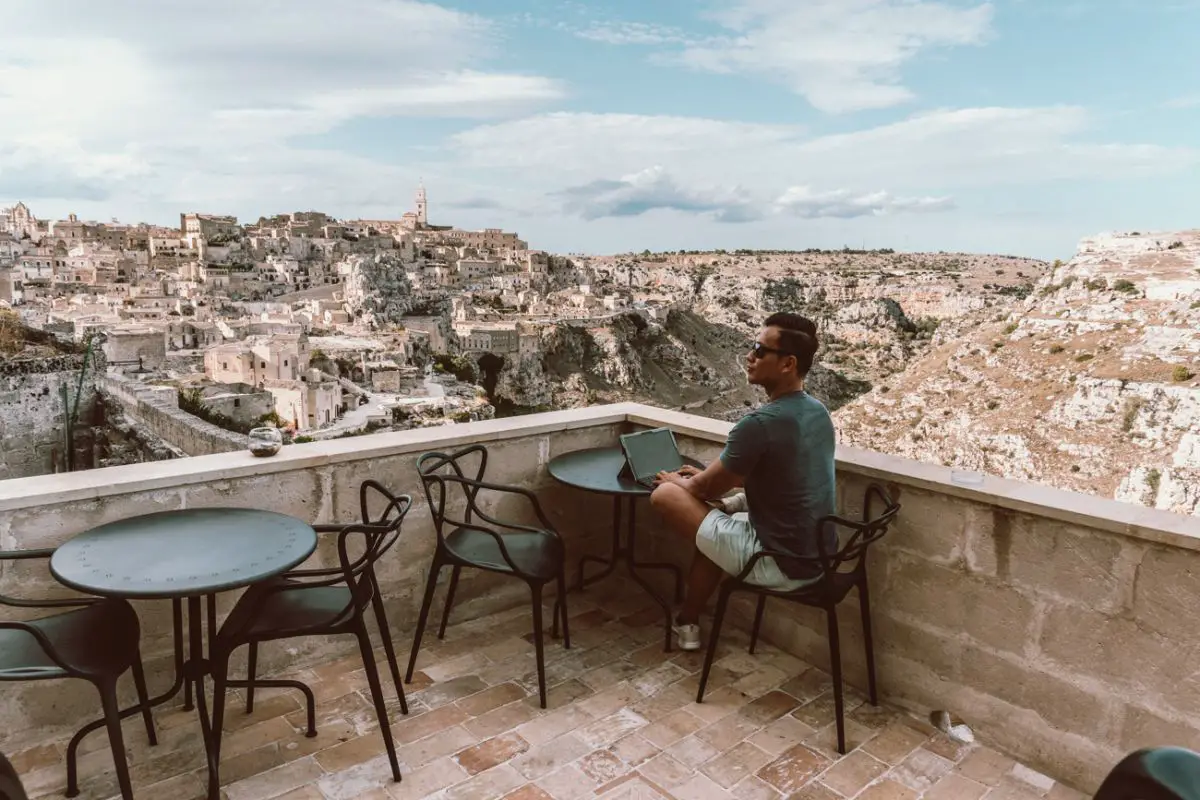
As for the car itself, I’d highly recommend going full Italian and renting a tiny car. It’s no surprise that Fiat and Minicoopers dominate the landscape. If you hope to drive in the old towns of Puglia, you’ll want a small car to squeeze into the narrow streets and parking spots. We went with a Smartcar 4 door which I thought was perfect. It was smaller than any rental car I’m used to but I felt like I could park anywhere. It was large enough where we could fit all our bags comfortably. Although I won’t lie, there were times where I felt like I would have rather had the regular two door smart cars!
Full Itinerary
This itinerary starts in Brindisi. We have direct flights from Frankfurt to Brindisi via Ryanair (gotta love living in Europe!) so this trip was so easy to plan. We picked up our car and started driving west towards Alberobello with their impossibly cute trullis. Then we more or less drove in a circle along the coast ending back up in Brindisi. We made pitstops to towns like Lecce that were more inland of the peninsula.

We powered through a lot of the towns quicker than I’d liked. Some days, we would even skip lunch because many restaurants were closed and we wanted to drive to the next destination (sorry no fast food out in these parts!) Nevertheless, we made sure we always had plenty of vino in the car and stopped at bars for our daily Aperol Spritz fix around sunset.
Bari vs Brindisi
Alternatively, Bari is the other large town in Puglia with an international airport. Many people may see they have better flights into Bari instead of Brindisi. Bari is only 1 hour north of Brindisi so it is also a great starting point for any Puglia road trip.
Compared to other destinations like Peru and Bolivia, or Guatemala and Belize, traveling around Europe is quite simple so this itinerary should be very easy to follow!
Day 1: Ostuni and Alberobello
The itinerary starts in Brindisi! Our flight from Frankfurt arrived at 10:30am. The car rental was quick and we were on the road by 11 or so. We decided to skip Brindisi after reading blogs that pretty much concluded you’re better off spending your time in the other towns. One of those being the beautiful town of Ostuni. We drove straight here from the airport and my goodness, they were not wrong!
Visiting Ostuni
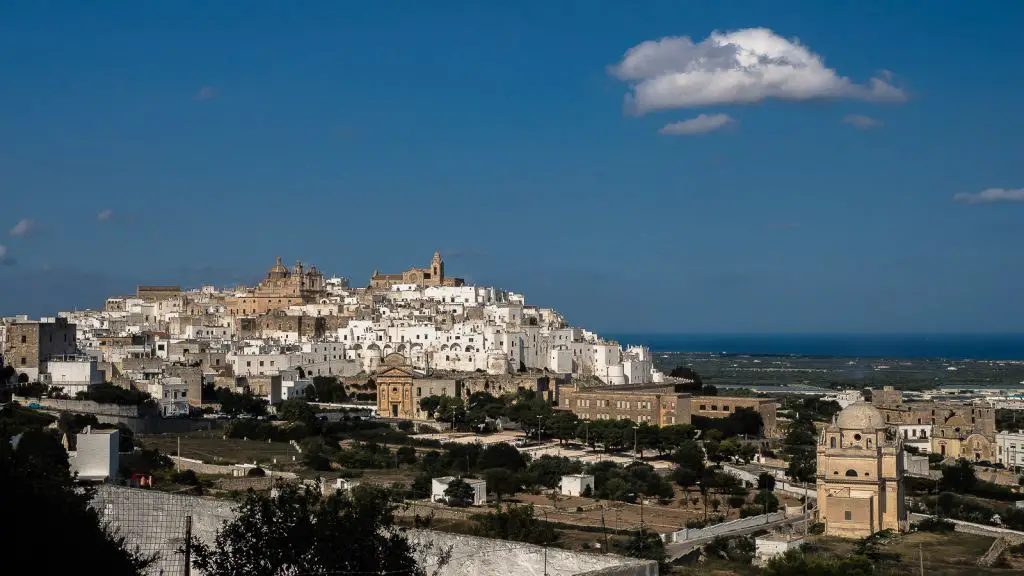
Ostuni is an absolutely gorgeous city. It’s whitewashed houses and its charming little streets were the perfect place to start our trip. We walked around the town which is quite small for some time before breaking for lunch. We made a reservation for lunch at the famous Osteria Del Tempo Perso which is actually a Michelin starred restaurant (we had no idea). The food was delicious and gave us an introduction to the delicious food of the region which is famous for its orecchiette (a type of pasta) and fresh lamb meats that reminded me of my time in Crete.
If you’re like me and just can’t get enough of those picturesque cobble stoned European streets, Ostuni has this in droves. It seemed like every street and alleyway I looked into beckoned for its picture to be taken. I of course obliged. I could have spent hours here! But don’t worry, every other town we visited also had streets that yearned for its picture!
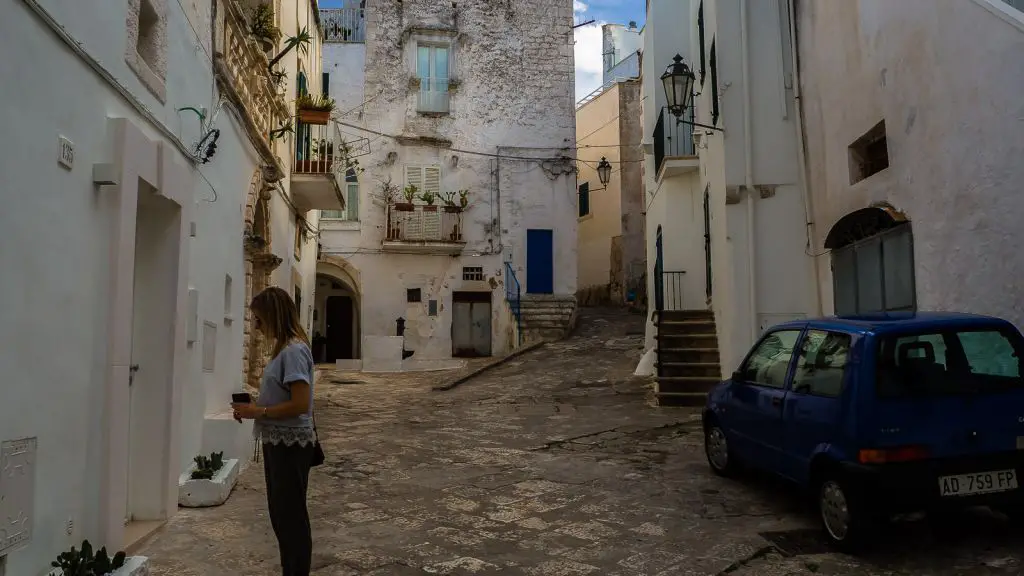
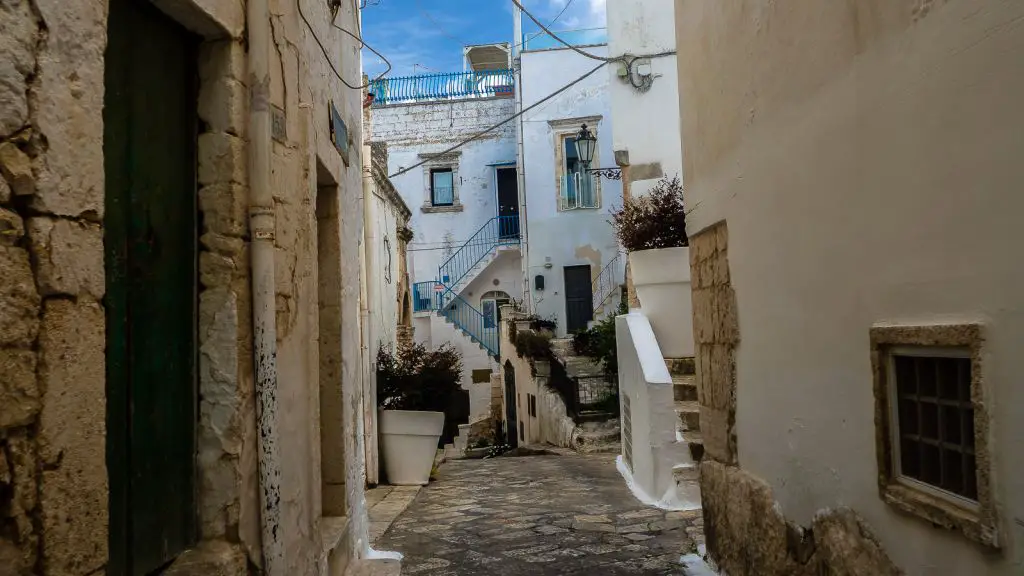


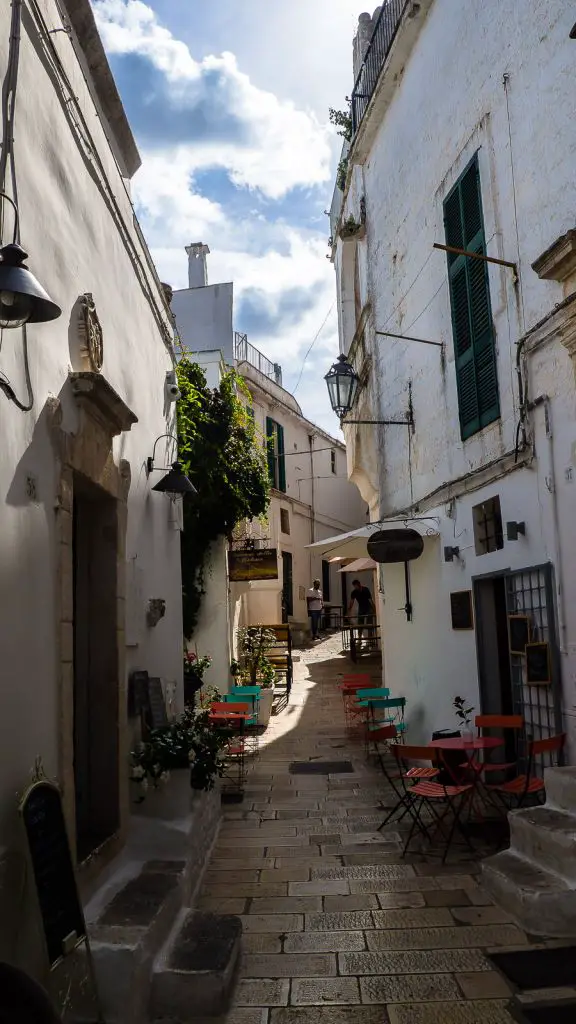


Staying in Alberobello

Alberobello was the next stop on the itinerary. We drove from Ostuni which was only about 30 minutes. If you were unfamiliar with Alberobello before, and you had Puglia in your mind, then this is definitely the one place you’ll want to highlight. It’s the place you’ve never heard of but the place you always needed.
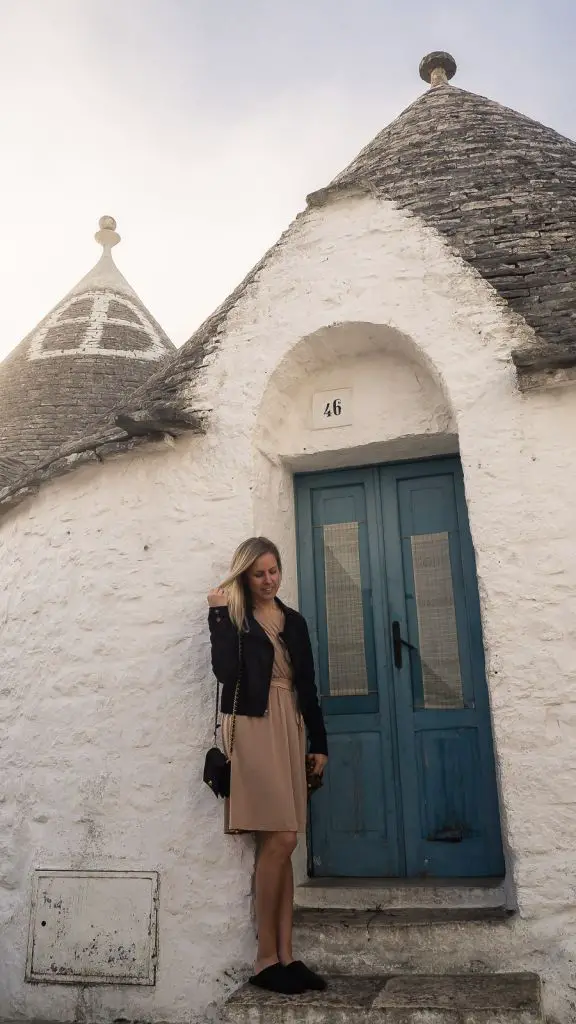
Alberobello, along with the towns Martina Franca and Locorotondo are famous for their Trulli, which are perhaps the cutest Hobbit like houses you’ll ever see. The whole region around these towns are filled with Trullis. You will see them in the countrysides as well as in the towns. However, Alberbello is by far the most picturesque and has the highest concentration of Trullis.
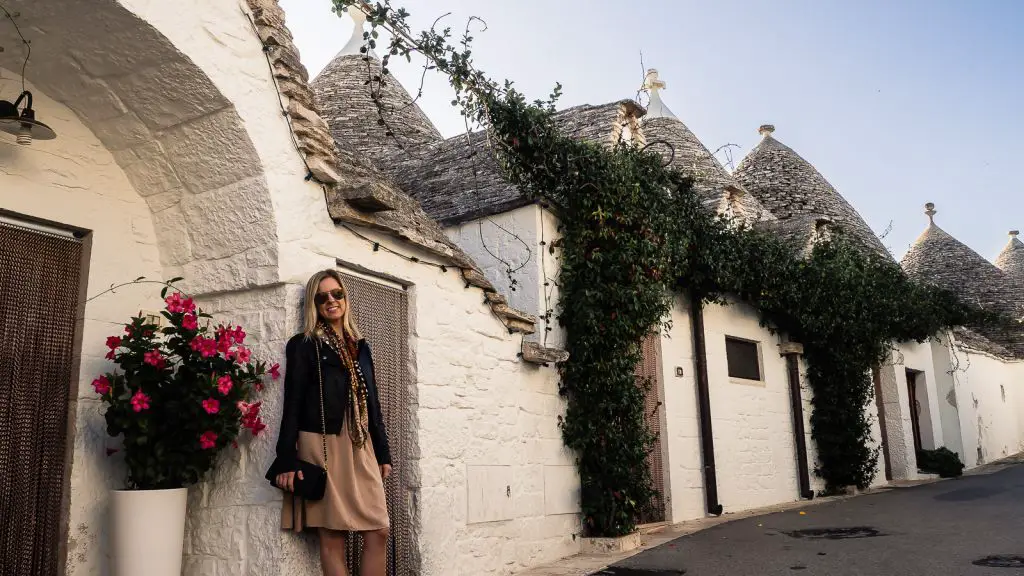
Thankfully you can stay in these trullis. There are an abundance of trulli hotels in Alberobello that you can book. In fact, in modern society, the majority of residents do not live in these houses anymore. They are not very practical and cost a fortune to maintain. Instead, they are mostly hotels, restaurants, souvenir shops, and museums.
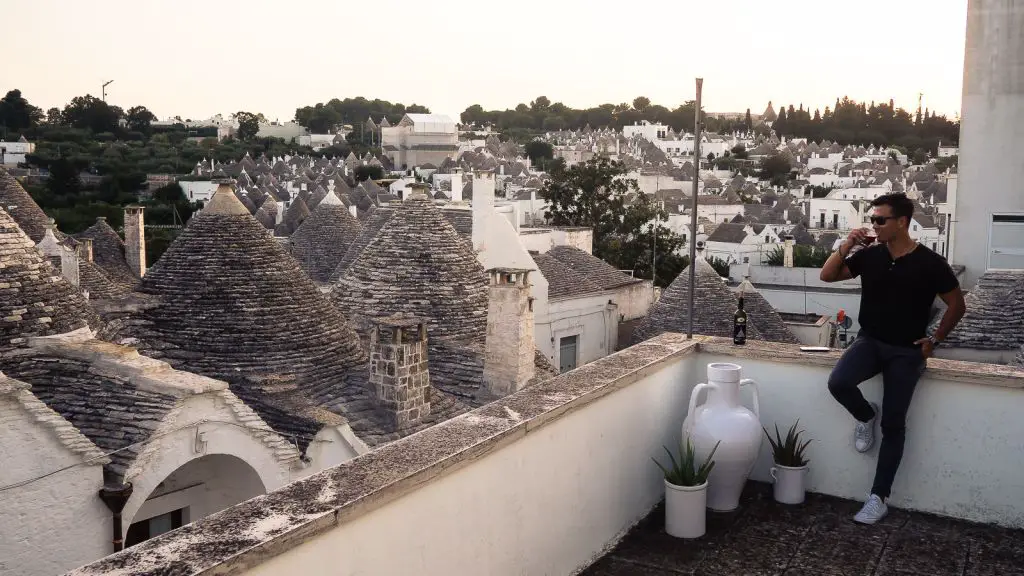
We ended up getting an Airbnb trulli with a rooftop that had panoramic views of the town. The rooftop was totally worth it as we were able to enjoy a bottle of Primitivo every night as we watched the sun set over the collection of trullis.
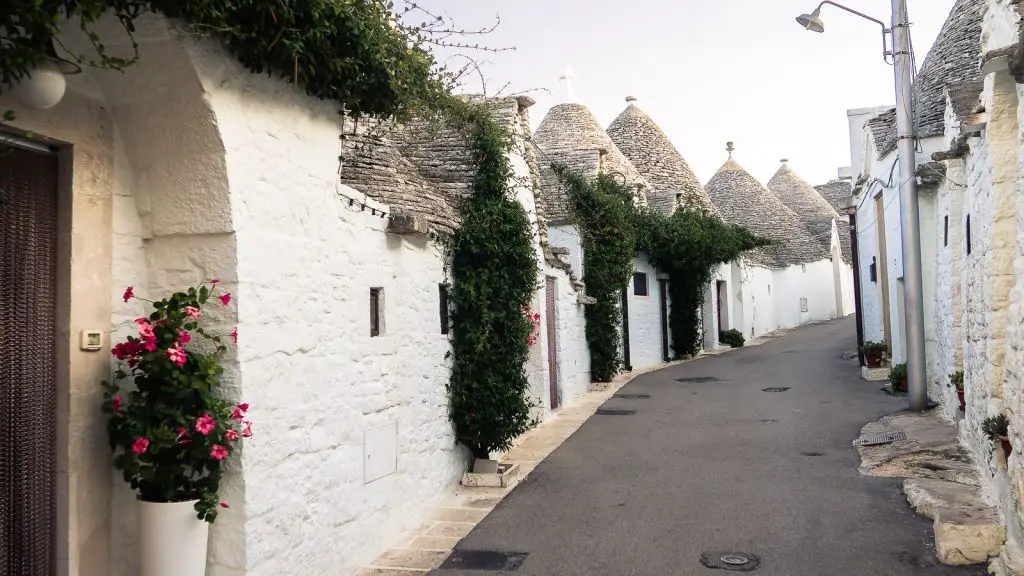
There are a few sights here to see but to be honest, my favorite part about Alberobello was just walking through the picturesque streets filled with these houses. You could spend hours taking photos getting lost in the alleyways of this town. Make sure to wake up in the early before the crowds get there!
A brief history of the trulli
In the words of Unesco, which declared Alberobello a World Heritage site in 1996, the easily recognisable trulli (the singular form is trullo) are:
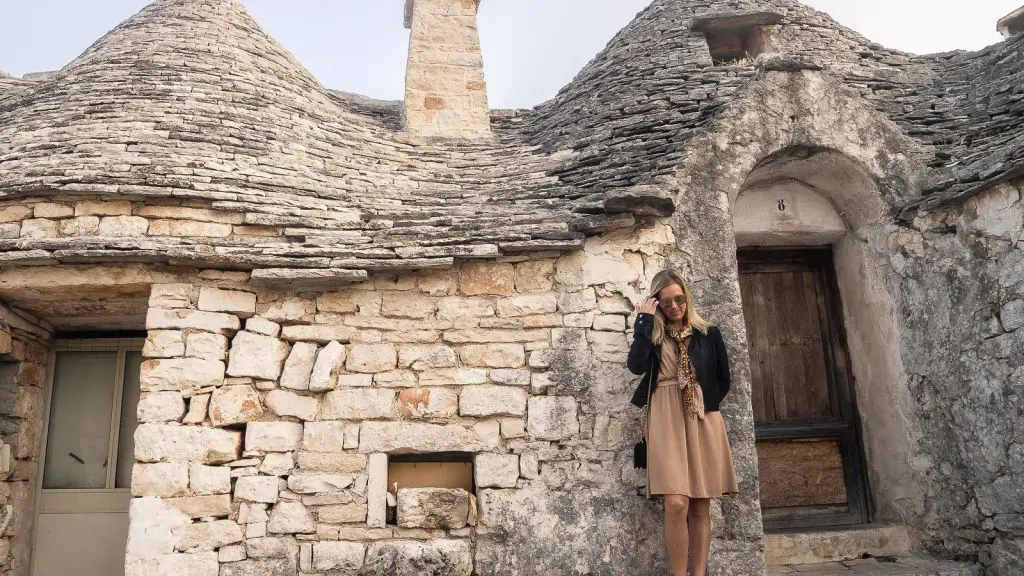
“remarkable examples of drywall (mortarless) construction, a prehistoric building technique still in use in this region. The trulli are made of roughly worked limestone boulders collected from neighbouring fields. Characteristically, they feature pyramidal, domed or conical roofs built up of corbelled limestone slabs.”
But the question is how did these buildings come to be? Why did this part of Italy develop so differently than others with such distinguishable buildings?
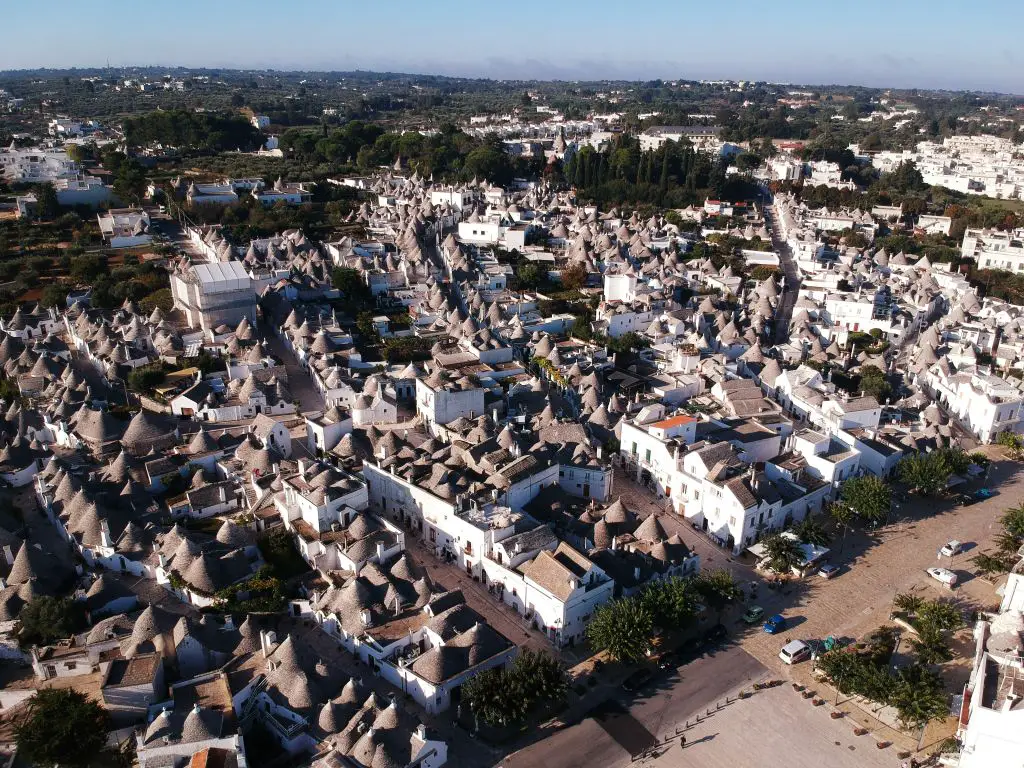
In the 1500’s, the Acquaviva family, the local rulers within the feudal system, wanted to avoid paying property taxes to the King. They ordered local peasants to build their houses and dwellings without mortar so that, in the event of a royal inspection, the structures could quickly and easily be taken down, and the tax bill would remain low. Using local limestone and some ingenious building techniques, the local population created the trulli, many of which remain standing today. I was pretty shocked at learning this is what happened but I guess money and tax speak for themselves.

So far, so good – for the ruling family that is. You can imagine how Puglian peasants, who had to tear their house down whenever an inspection was on the horizon, were less happy with the situation. Fast forward to the 1700s and, after several petitions from discontented citizens about the ongoing treatment and rule by the Acquaviva family, the King granted their wish to become a ‘royal’ town, and therefore free from the whims (and tax-dodging preferences) of their feudal lords.
After this decree, unsurprisingly, there was less reason for trulli to be built. However, they stand today as a testament to the lengths the powerful will go to keep their wealth, and the perseverance and resourcefulness of the powerless to make the best of their situation.
Day 2: Matera, Pulignano a Mare, Monopoli
The second day was a pretty packed day going to some of the most famous towns of the region. We stayed the night in our Alberobello trulli and had breakfast at a local bakery called La Lira which I’d highly recommend for their paninis.
Visiting Matera – The Ancient city
Matera is well-known for its ancient cave dwellings, and is sometimes known as “the underground city” because of this. These dwellings are from the Paleolithic period, and some scholars have suggested that if these dwellings were continually inhabited, then they would be some of the oldest settlements in the world! In the 15th century it was even part of the House of Aragon, a royal Spanish monarchy.


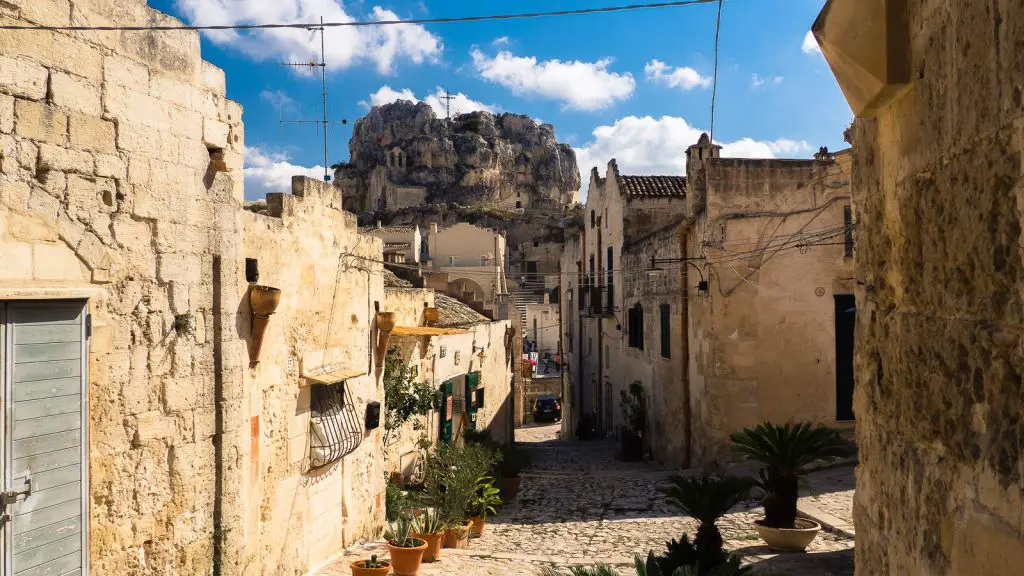
From the Passion of the Christ by Mel Gibson, to Wonder Woman, to the remake of Ben Hur with Morgan Freeman, the caves, streets, and stairways of old Matera have been the perfect backdrop for movie directors looking to find the right frame for certain screenplays.
Matera is one of the oldest continuously inhabited cities in the World. People have been there for 9-10,000 years.
To sum it up, Matera is unlike any other town I’ve seen in Europe or the rest of the world. The buildings really look like they’re from another time in history, separate from the medieval and renaissance architecture I’ve become accustomed to. You don’t really need a plan of attack in visiting Matera. Simply walk around and get completely lost and mesmerized in the ancient buildings. Enjoy the views from the observation deck or enjoy a drink from the numerous restaurants in the town.

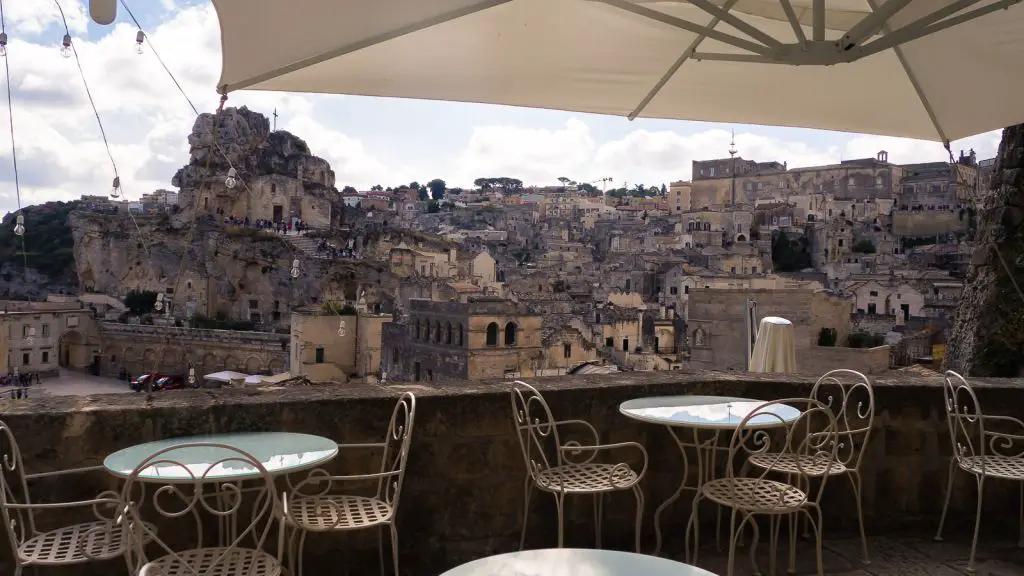
For the best restaurant with stunning views of the area, make sure to visit the Regia Corte which is also a beautiful hotel. We wanted to have lunch here but in the offseason they only served dinner. The deck was still open but no one was working. This is why you always need to have wine and glasses ready on a Puglia road trip!
For panoramic views of the town, drive to the lookout point Belvedere di Murgia Timone (Belvedere su Matera e Sassi) which is 15 minutes outside of town. Totally worth it for the stunning views!
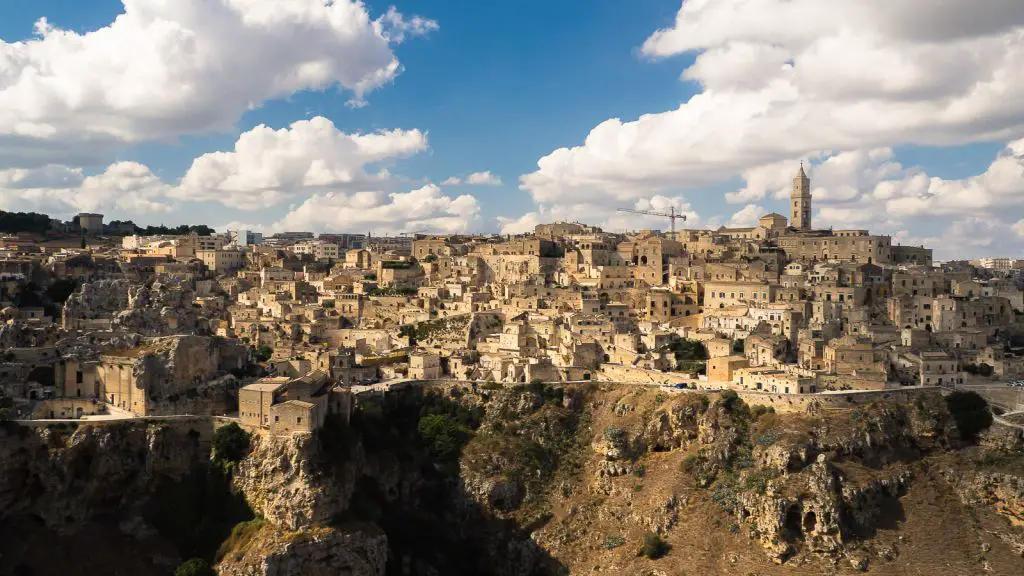
Visiting Pugliano A Mare
After Matera, we drove about 1 hour north to the coast to visit the famous Pugliano A Mare with its famous Lama Monachile Beach.
Lama Monachile is the most famous place in Polignano. The image of this cove you will have seen many times on the Facebook or Instagram notice boards, being in fact a very popular background for tourist selfies or shots worthy of the coolest influencer or fashion blogger. Two sheer rock walls and a small cove in the middle . The name speaks volumes. In fact it seems that “monachile” derives from the fact that originally there were numerous monk seals.
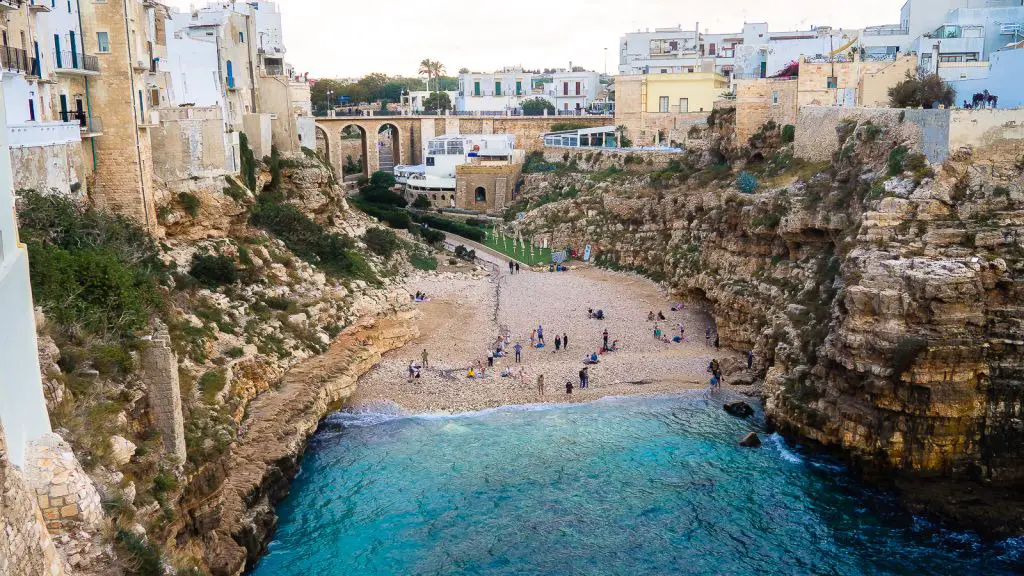
It is located along the ancient Via Traiana, built by the emperor Trajan to connect Rome and Brindisi , and was used in the past as a port of call for ships carrying goods from the East, then brought into the country by carts. From here, among other things, a whole series of hidden crossings and tunnels allowed a time to connect the historic center of the country to natural cavities where the goods were rescued during storm surges.
For the best views and photography opportunities of the bay, walk through the old town with its cute streets until you reach the ocean. You can’t miss it and the views are totally worth it.
Visiting Monopoli
Sitting on Puglia’s Adriatic coast around 30km south of Bari, Monopoli is a lovely town for a day trip, possibly in combination with Polignano a Mare just up the coast, mixing a dip in the sea with a good lunch and a wander around the old town centre.
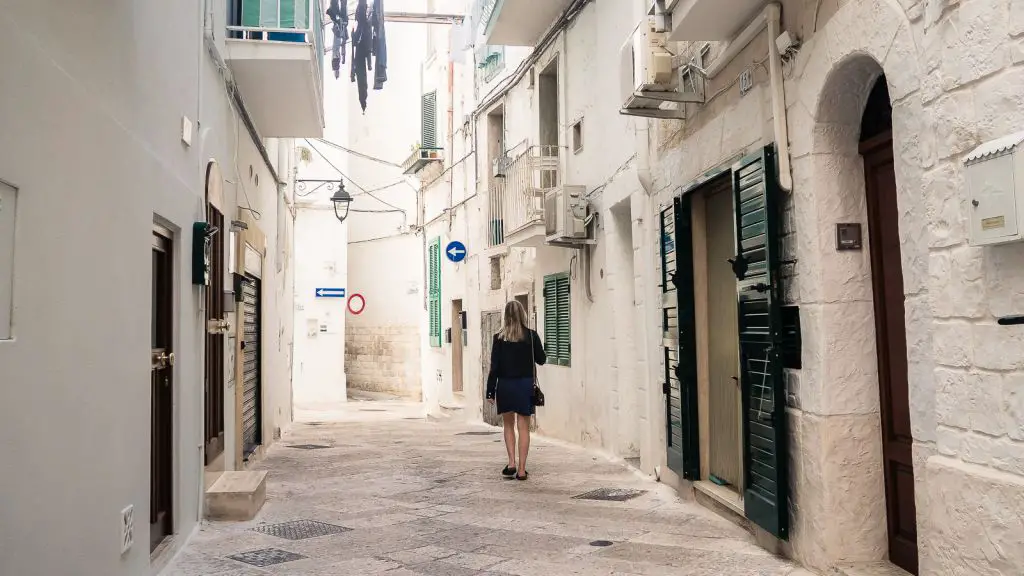
Like so many towns on the Adriatic, Monopoli’s history has been thoroughly influenced by its east-facing position and its fortified sea-front walls and castle tell many a story.
Parking in or around Piazza XX Settembre, location of a colourful street market, head east towards the cathedral. To find it just look upwards and you are sure to see its elegantly conceived bell tower thrusting into the sky. Built in 1693, the tower is over 60 metres high, completely dominating the town below.
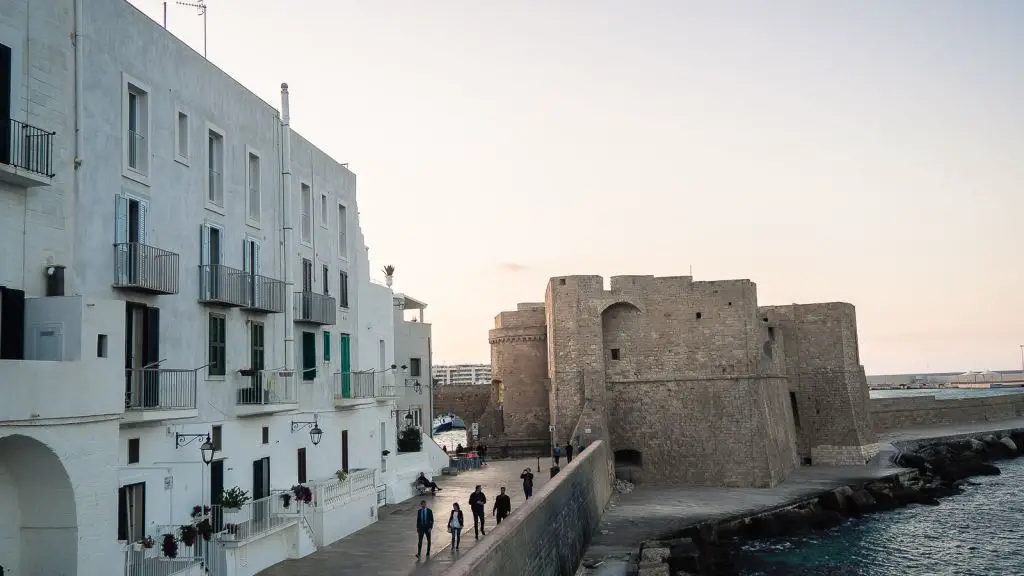

Passing by the cathedral (or after a quick look in), continue heading east and you will soon come to the first part of the sea-front, with its defensive walls and sandy bay, ideal for a refreshing dip. Continue down the lovely Via Papacenere, which will take you behind the walls and onto the Lungomare sea-front promenade, complete with some fine buildings, including the curvaceous Church of Santa Maria della Zaffira, a cannon-mounted bastion and the impressively robust Charles V Castle, built in 1552. The castle can be visited and the view from the top is wonderful.
Day 3: Taranto, Beach, Gallipoli
The next part of the itinerary heads southwards towards the southern coastline of Puglia.
The town of Taranto
I will say that Taranto was the town I knew the least about. I couldn’t find much information online and it didn’t really seem to be much of a tourist destination. In fact, the only reason I decided to stop here because if you look on a map, from Alberobello, it is the first town on the coast. That is pretty much the only reason we stopped here.

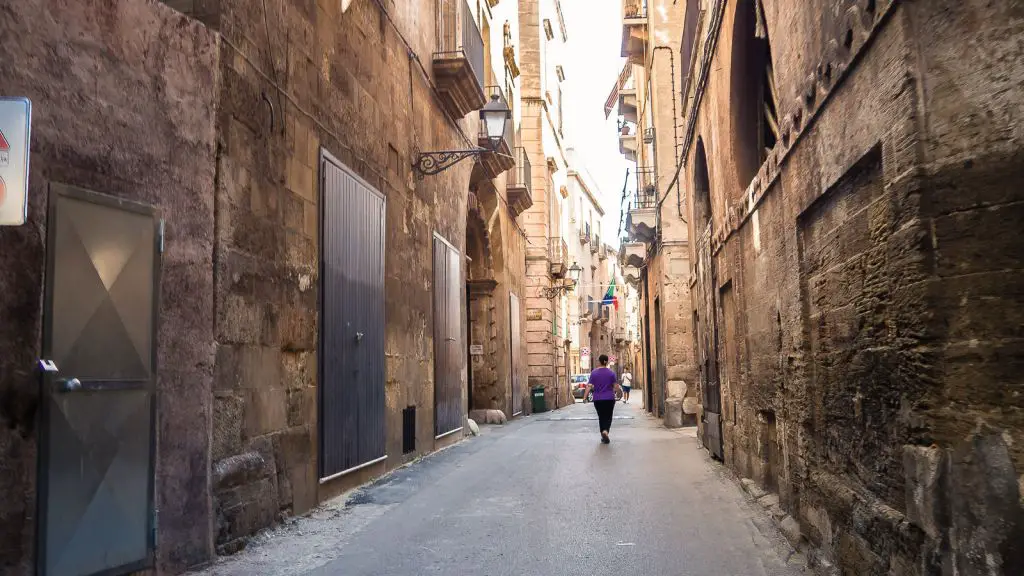
Turns out Taranto is one of the worst polluted cities in Italy and is home to huge steel plants visible from the all areas of the town. We drove straight to the old town which is on its own little island connected by a bridge to the mainland.
The old town centre is a fascinating maze of narrow alleyways, many of which only allow access in single file. Echoing with the voices of fishermen returning from their arduous days at sea, these streets provide a charming and unusual setting for visitors. Fish markets rub shoulders with hidden architectural gems and cafés and bars spill out onto the pavements.
Without a doubt Taranto was the least tourist packed town that we visited. It is not a popular tourist spot by any means but I still enjoyed walking through the little alleyways with not a soul in sight. If I was short for time, I probably wouldn’t make this a stop but it is worth a morning if you have the time!
Buying wine from a gas station
After Taranto, we drove inland towards the town of Manduria. I read on numerous blogs that you can visit wineries here that dispense wine into plastic jugs from a gas pump. Turns out, it was true! We drove to the Consorzio Produttori Vini where all my dreams were filled (literally).
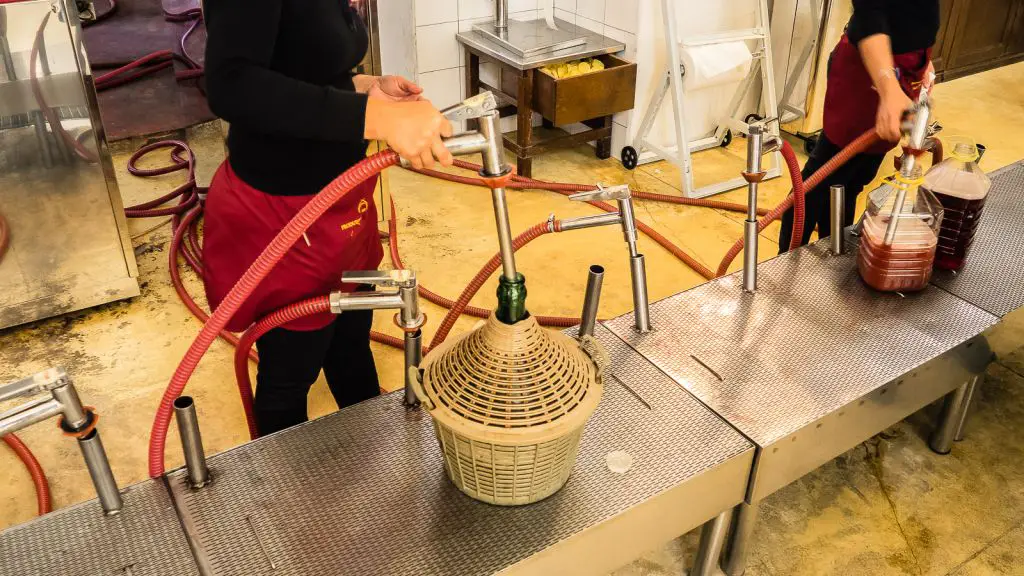
You literally take a plastic jug of your preference (3L or 5L), proceed to the “gas stations” and tell them what kind of wine you want. They quote the prices per liter just like gas stations do. They they pump the wine from a gas nozzle filling up your jug, while you can watch the meter fill up. The wine here is dangerously cheap at €1.5 to €2 per liter depending on the type of wine you want.
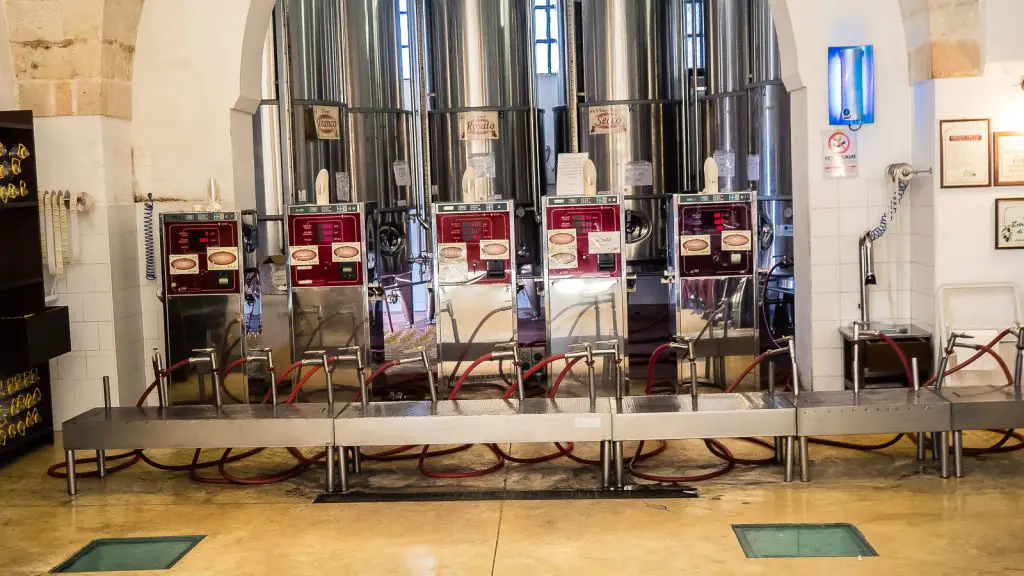
They have red, white, and rose so you won’t have trouble choosing one. I went with Primitivo as that is the grape of the Puglian region. In total, I paid just over €8 for 5 liters of wine. Yes, FIVE LITERS! You would expect such cheap wine to be terrible but surprisingly the wine is quite good as you’d expect in Italy.

We grabbed a bunch of plastic cups from them too and this would entertain us for the rest of our trip. Spoiler: We didn’t even drink half of it by the end of the trip.
The old town of Gallipoli
“Beautiful city”: that’s what Gallipoli means, and the town certainly lives up to its name!
Situated on the west, Ionian coast of Puglia’s Salento peninsula, our Gallipoli may not be as famous as its Turkish namesake, site of the disastrous 1st World War battle, but its history is long and varied, its historic centre a delight and the beaches which flank it superb.
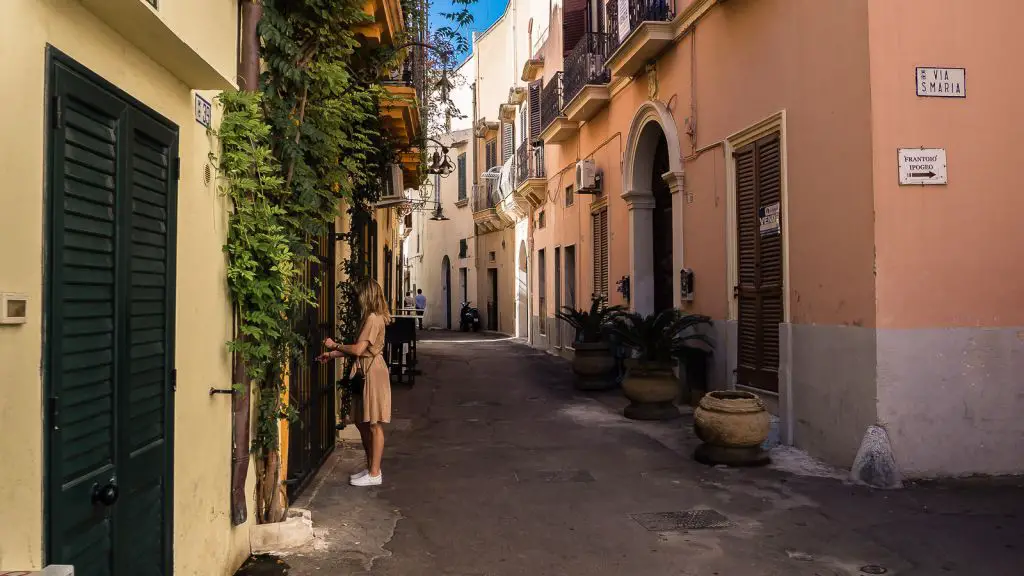
The old town centre sits on a tiny island connected to the mainland by a 17th century bridge. It is almost completely surrounded by defensive walls, built mainly in the 14th century.
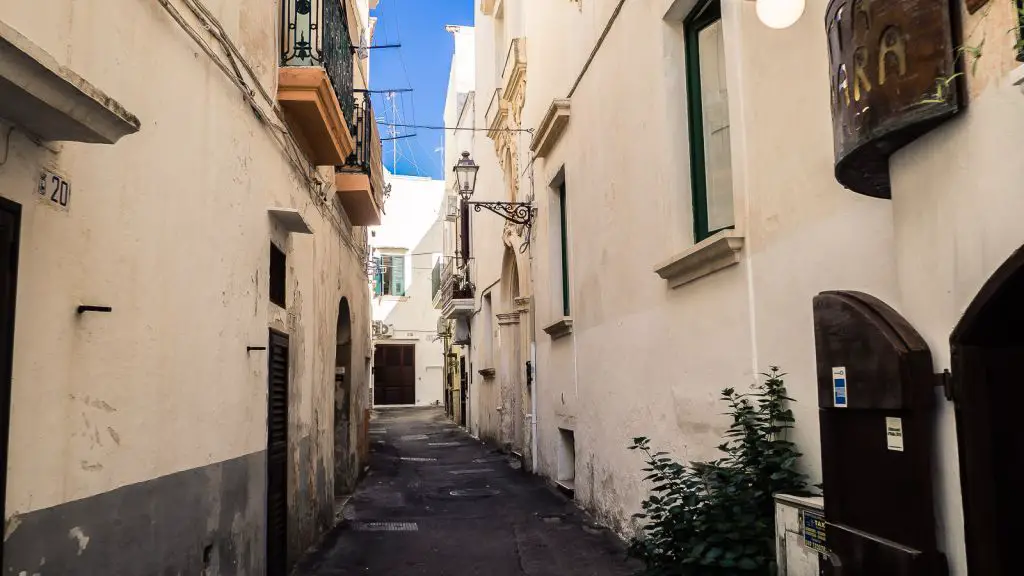
The east side is dominated by a robust fortress dating back to the 13th century, but largely rebuilt in the 1500s when the town fell under Angevin control.
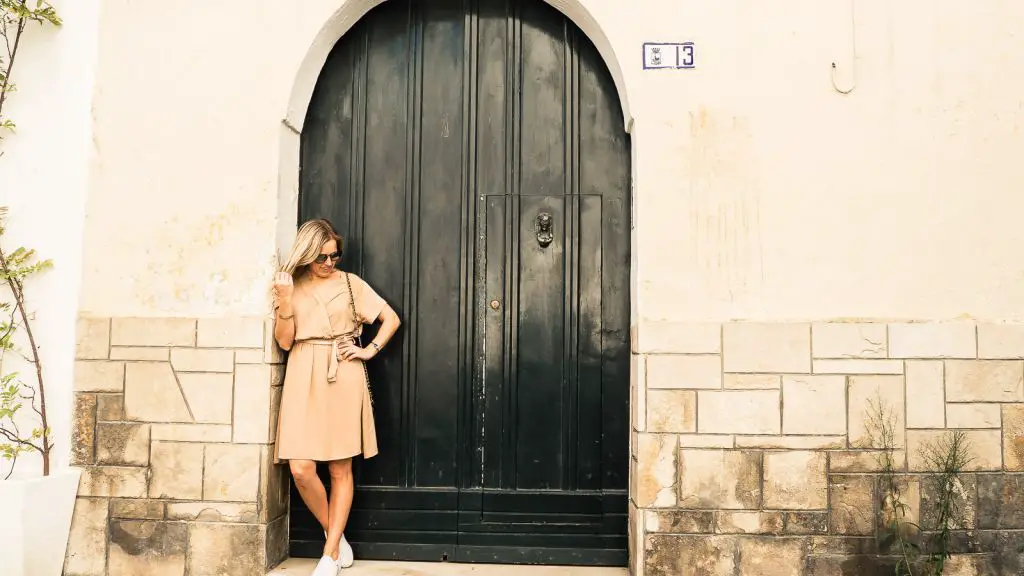
These fortifications tell us a lot about Gallipoli’s history: thanks to its strategic position, it was frequently under siege. Founded, so legend tells us, by Idomeneo from ancient Crete, the town soon became part of Magna Graecia and remained so until Pyrrhus, presumably following one too many disastrous victories, was defeated by the Romans!
After being sacked by hordes of Vandals and Goths, the Byzantines arrived, rebuilding the town much in the form we recognise today. Normans, Angevins and the Bourbons arrived in successive waves until the Unification of Italy in 1861.
The island heart of Gallipoli is home to numerous impressive Baroque churches and aristocratic palazzi, testament to the town’s former wealth as a trading port. A labyrinthine weave of narrow streets all eventually lead to the broader sea-front promenade with its wonderful views.
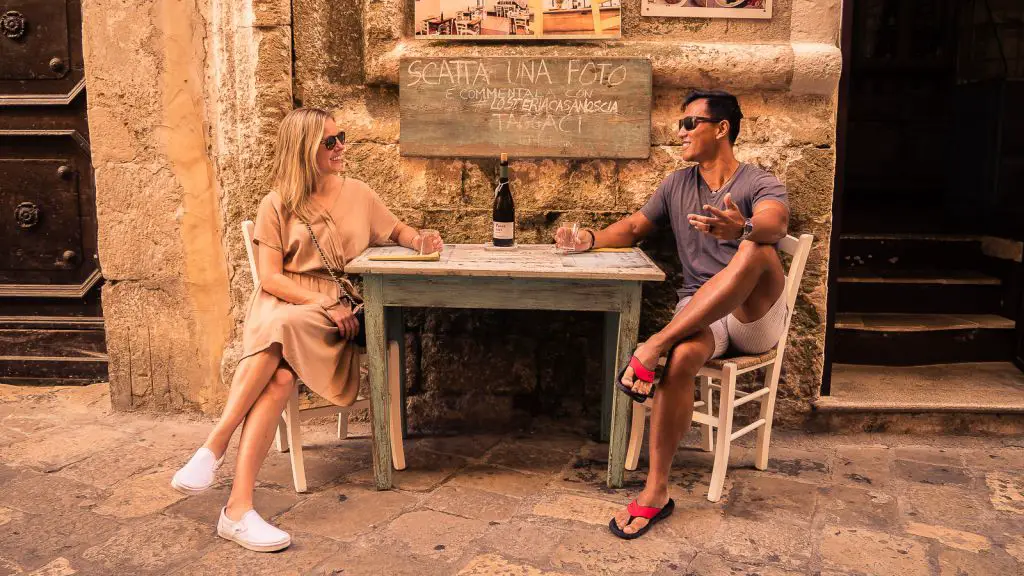
In the summer months cafes, bars and restaurants proliferate onto the pavements making for an extremely pleasant atmosphere, while the beach, La Spiaggia della Purita, is an attraction in its own right. An evening passeggiata (pre-prandial stroll) around the walls, looking out to sea, is a great way to prepare for a fresh fish dinner.
Pasta making class for dinner
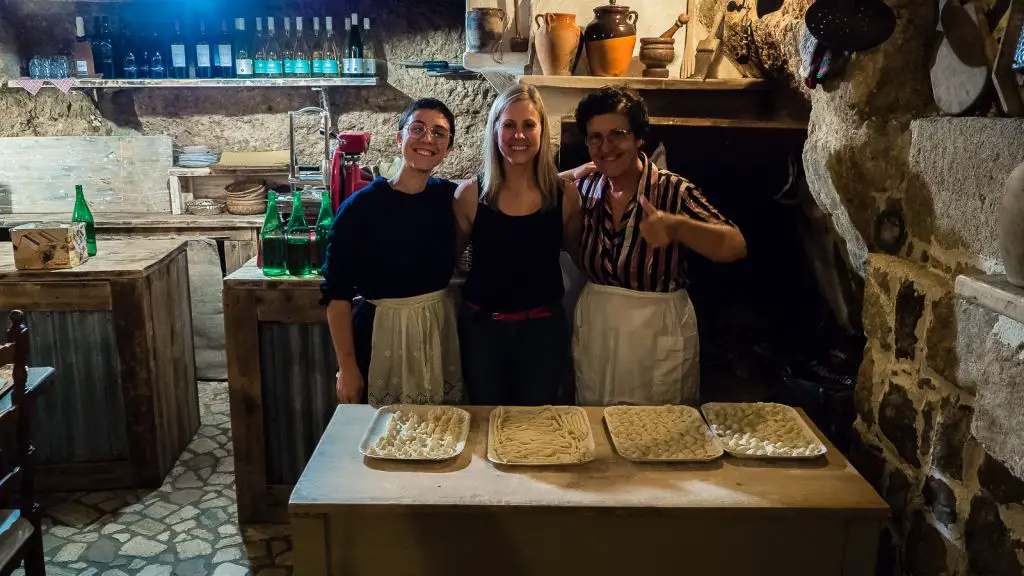
For dinner, we booked an amazing pasta making class nearby in the town of Matino. We found it on Airbnb and it came equipped with the quintessential Italian nonna that made sure to critique and laugh at our terrible pasta making skills. For €35, it was totally worth it!
We made different types of local style pasta in their beautiful traditional house from the 17th century. We were served an absolute feast afterwards as well.
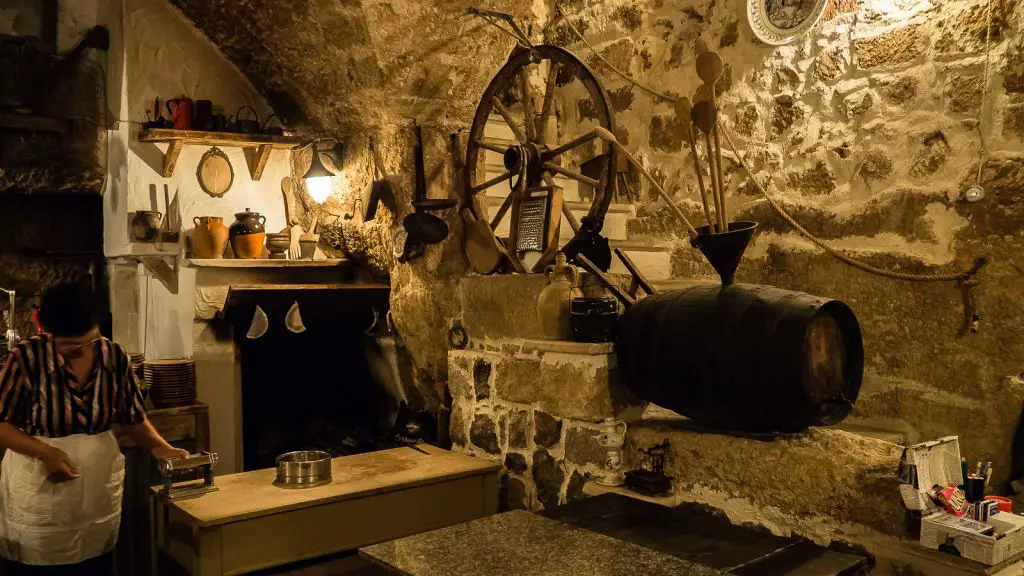
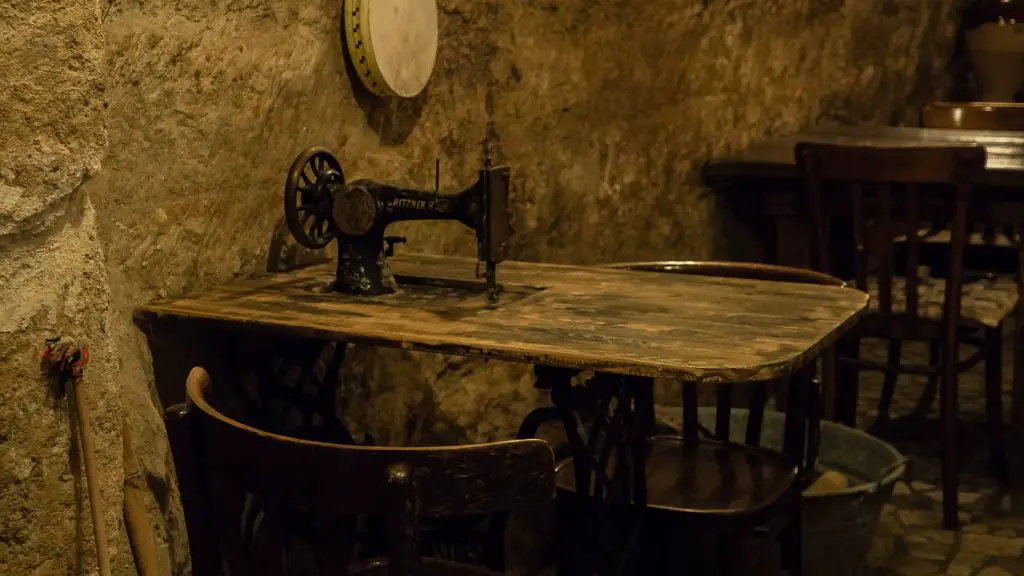
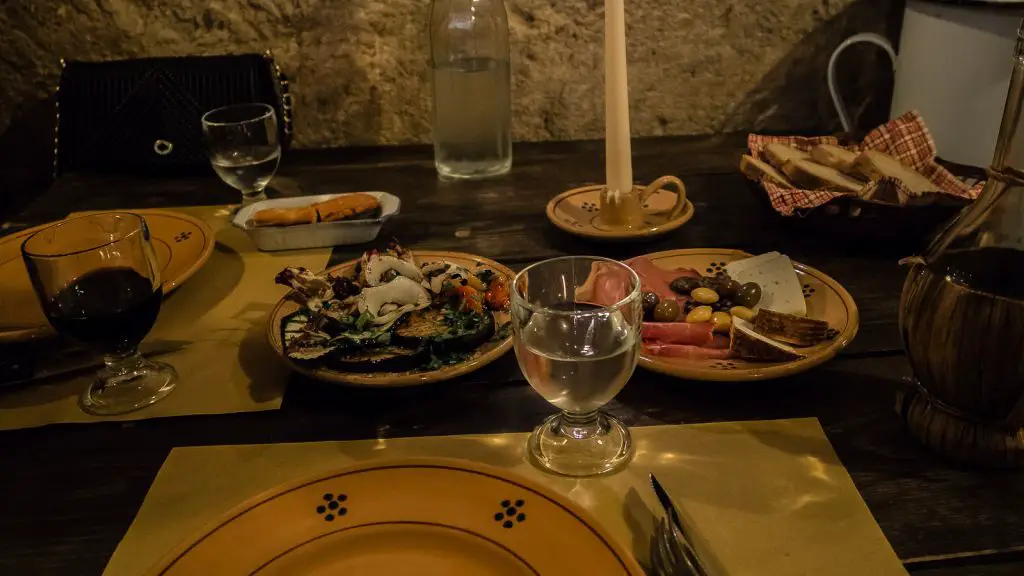

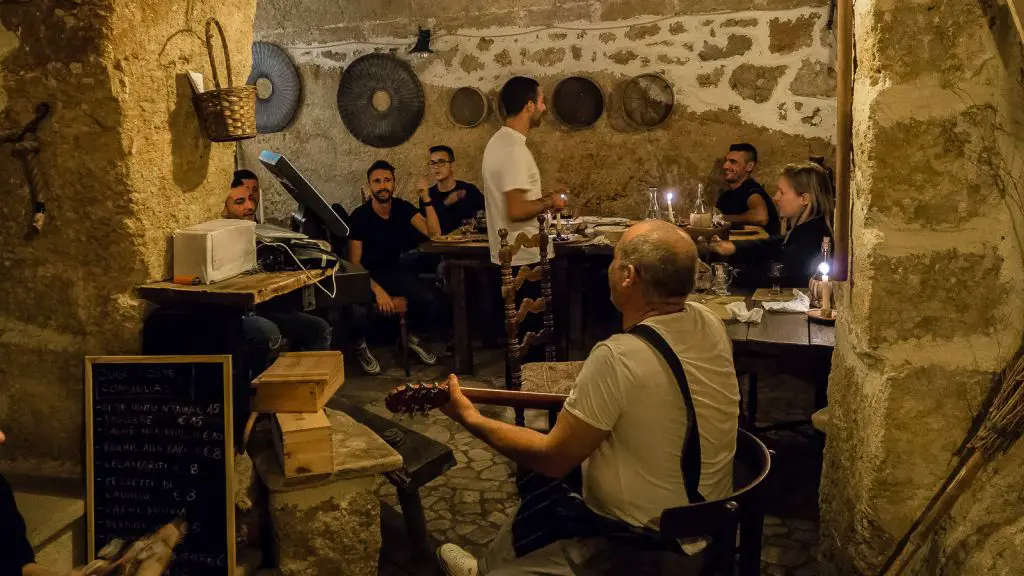
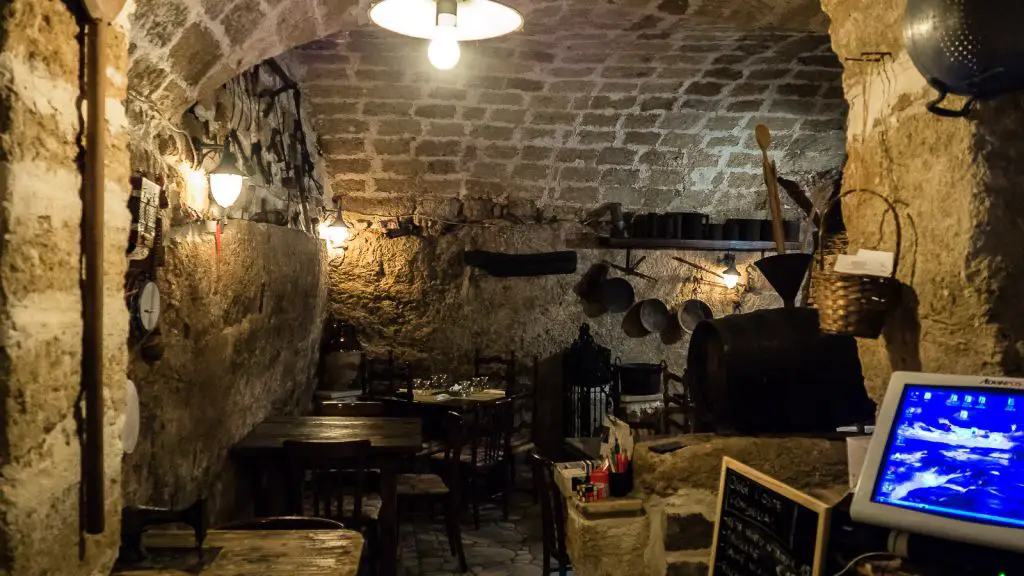

Day 4: Gallipoli, Beach, Santa Maria di Leuca
Day 4 was dedicated to beach towns and driving along the coast.
We spent the morning exploring Gallipoli and taking fun pictures of the surrounding architecture. Gallipoli is such a cool little town and I really wished I could have stayed another night. Our apartment was absolutely beautiful. We stayed at the Pallazzo Salapolis which felt like I was in some sort of drug dealer’s palace. The apartment was huge with spiral staircases and crazy stucco on the ceiling. The bathroom was impeccably remodeled and we even had a balcony overlooking the street. We had breakfast on the rooftop every morning which was fantastic.
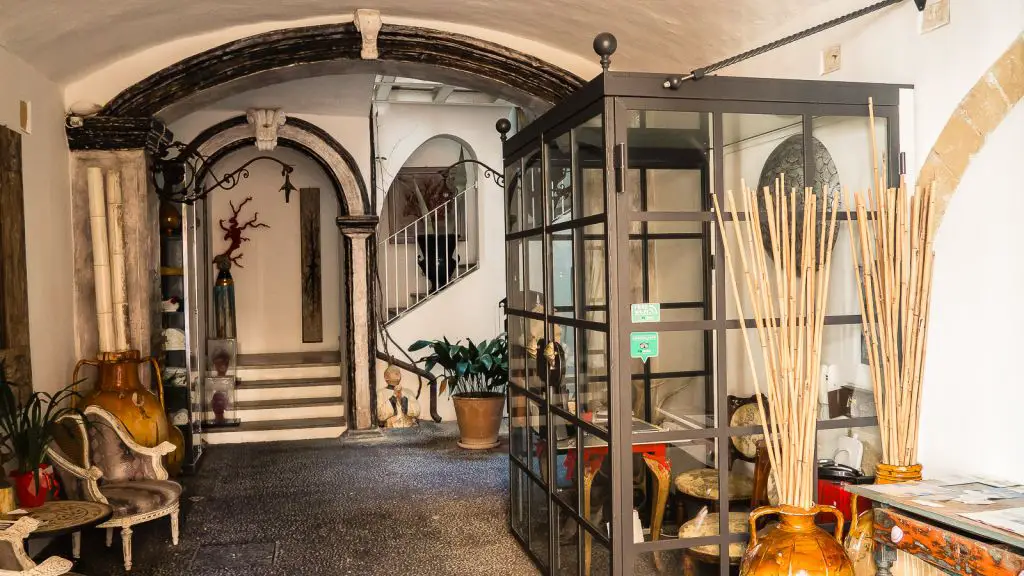
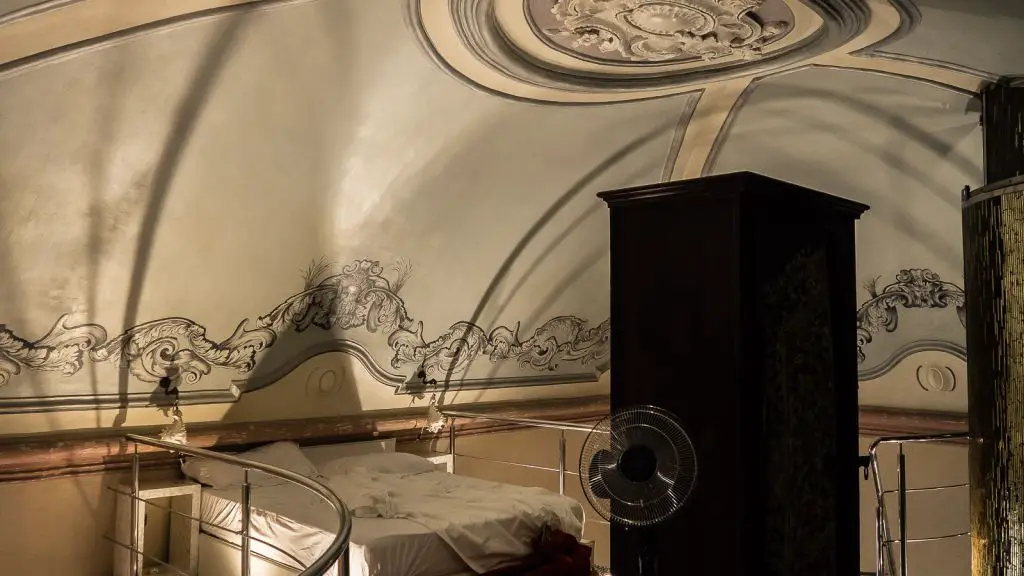

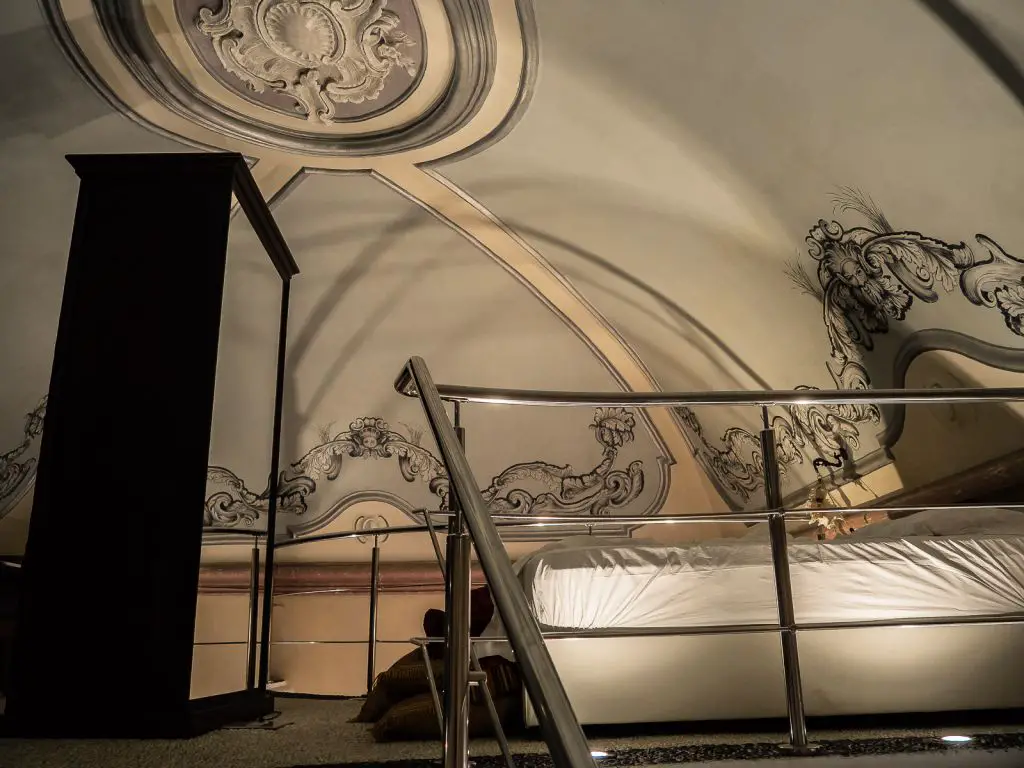
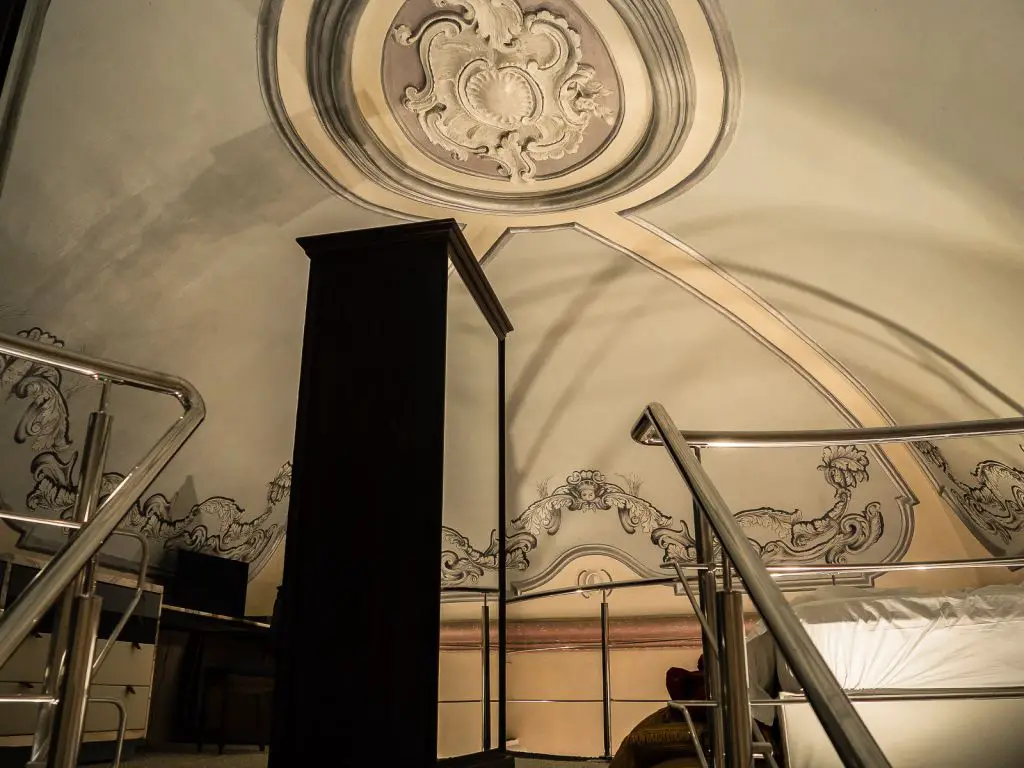
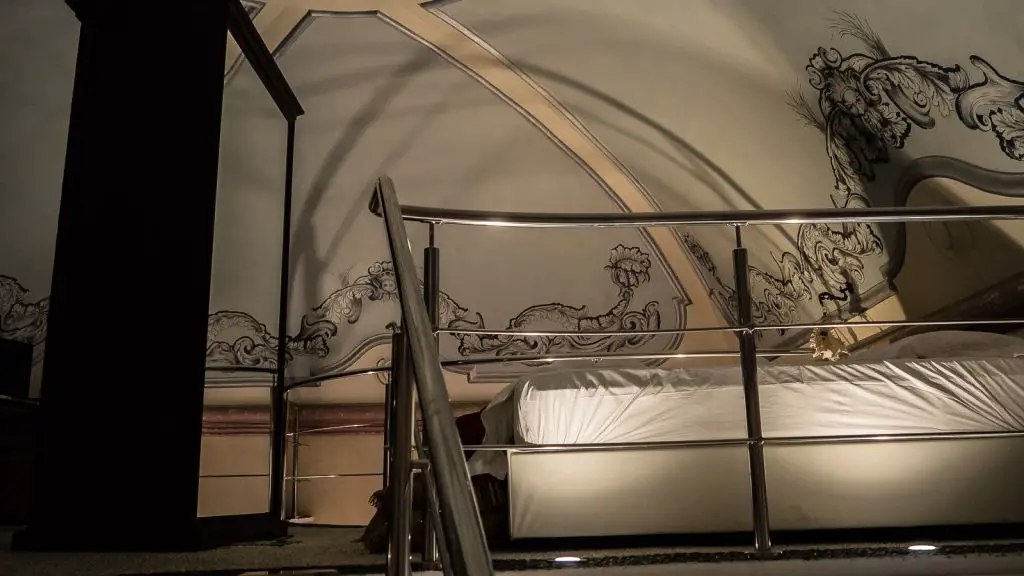
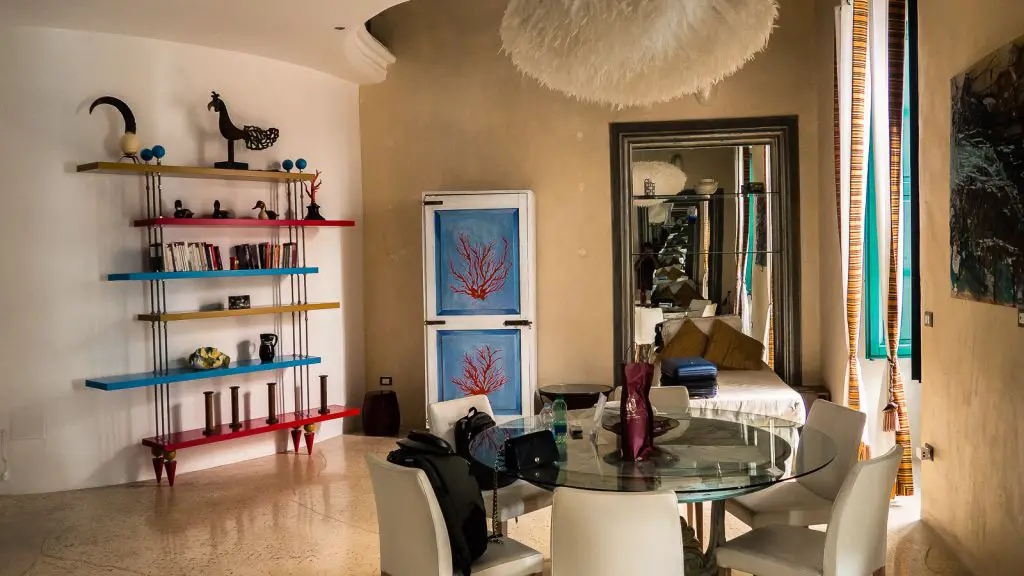

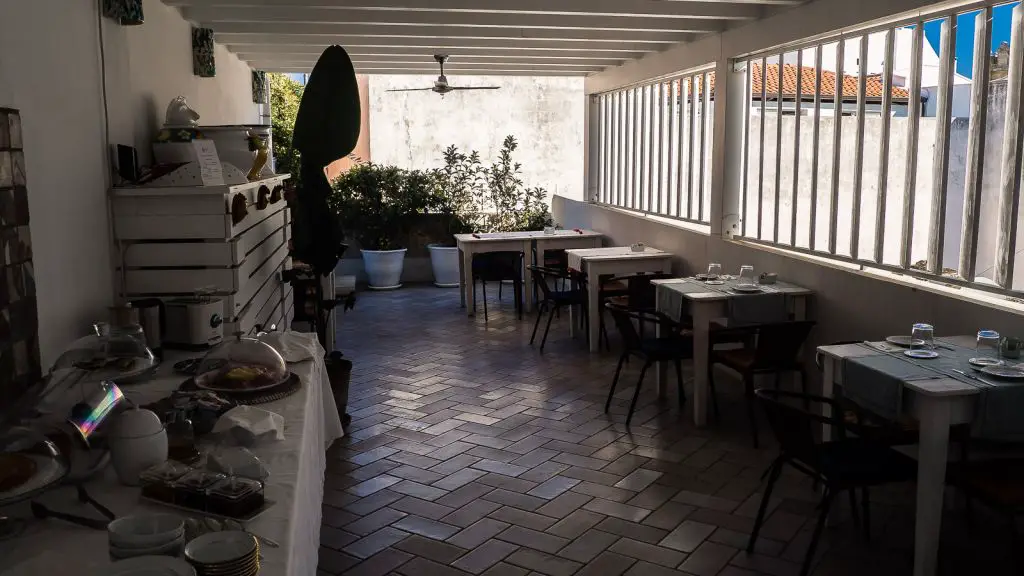

San Giovanni Beach
This southern part of Puglia has the nicest beaches in the region by far. I had been to some Mediterranean beaches before but I must say that this region has beaches most similar to tropical style beaches that you’d find in the Maldives or Turks and Caicos.
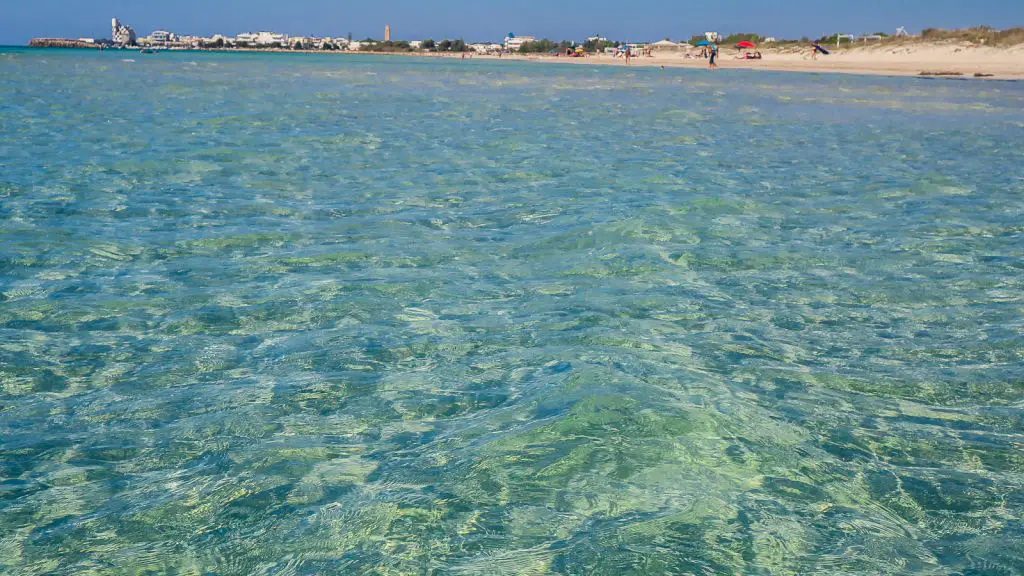
I think the nicest beach is definitely at the San Giovanni Beach just south of the town of San Giovanni. This is actually a popular kitesurfing beach and we saw many kiters packing up as the morning winds died down. As you’d expect with kiting, the beaches are shallow and sandy. The water is beautiful here with white sandy bottoms.
Nearby, there is the famous Maldives de Salento beach is supposed to be Italy’s answer to the Maldives. Having been to the Maldives, I can assure you there is no comparison and I was not impressed. It was also much more packed than the beach at San Giovanni.
Leuca Town
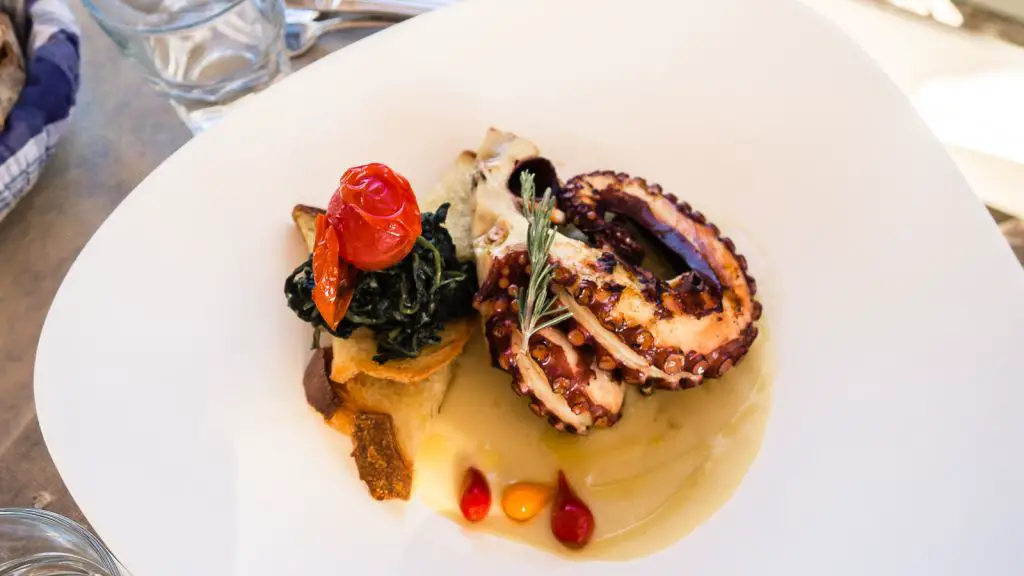
Last stop for the day, we drove to the very southern tip of Puglia to the town of Santa Maria di Leuca. We had a fantastic late lunch here overlooking the ocean. We didn’t spend much time in the city itself unfortunately.
After Leuca, we drove to our accommodation in Sternatia for the next two nights.

Staying in Sternatia
For the last two nights of our trip, we decided to mix it up and stay in a much smaller town away from the coast. To be honest, we had no idea about this hotel until I read a blog post by Along Dusty Roads where they stayed at this most picturesque and amazing of houses. I saw their pictures and we immediately fell in love with the place.
If you want a quaint, quiet, no tourists, and totally Puglian Italian village, then Sternatia is your town. The days are slow here and the people still live in the traditional manner. I don’t think we saw a single other tourist the entire time. The town is well located in the center of the peninsula and makes for a good base to explore the nearby attractions along the coast. It is also a 20 minute drive to Lecce which we visited for dinner on both nights.
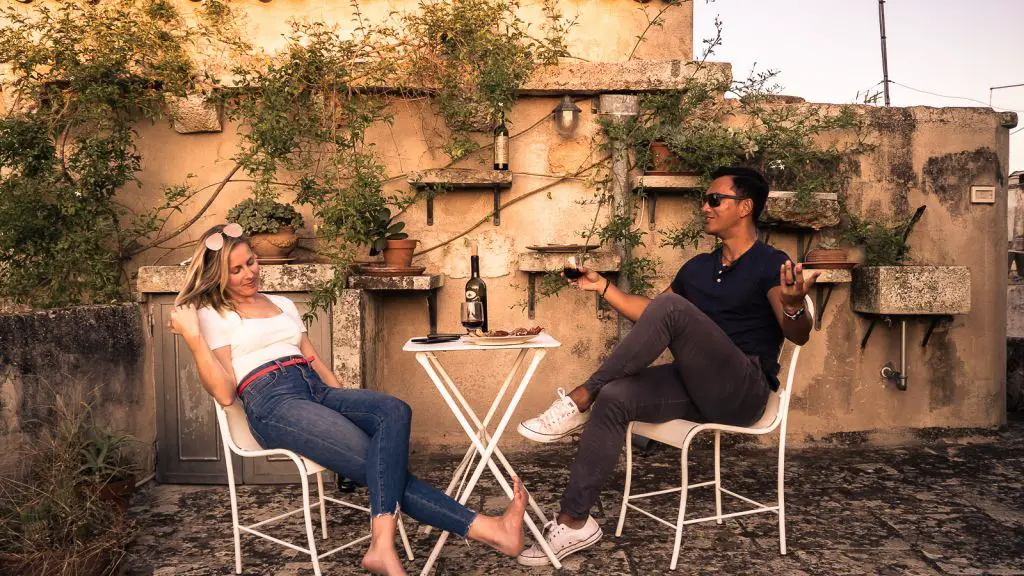
The house that we stayed was absolutely stunning. It is a traditional Puglian house that’s been beautifully renovated but has kept all of its historic charm. The terrace was the best part of the house as we had views of the entire town as well as the basilica. A great place to enjoy our 5L gas station wine, or a morning coffee.
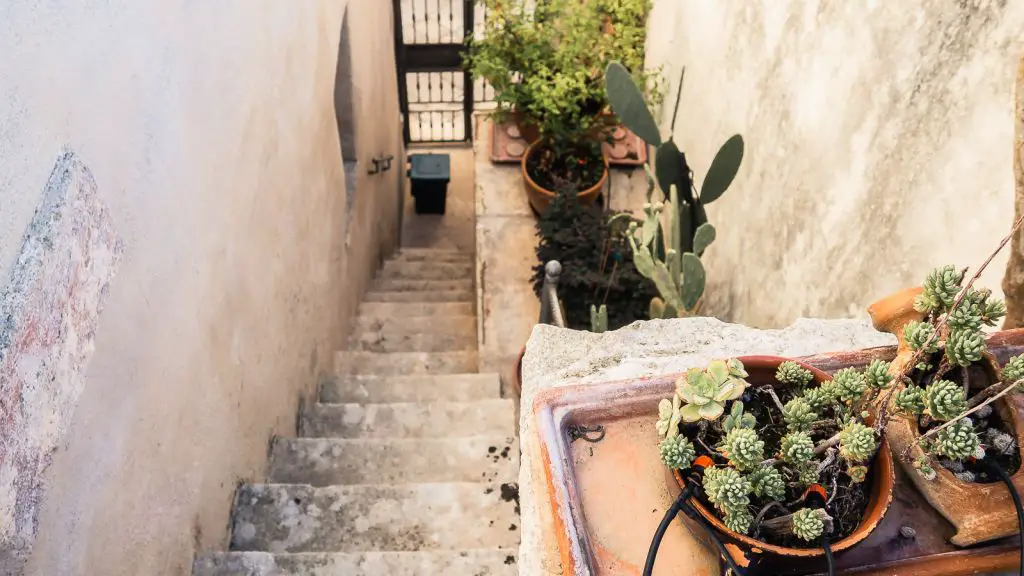
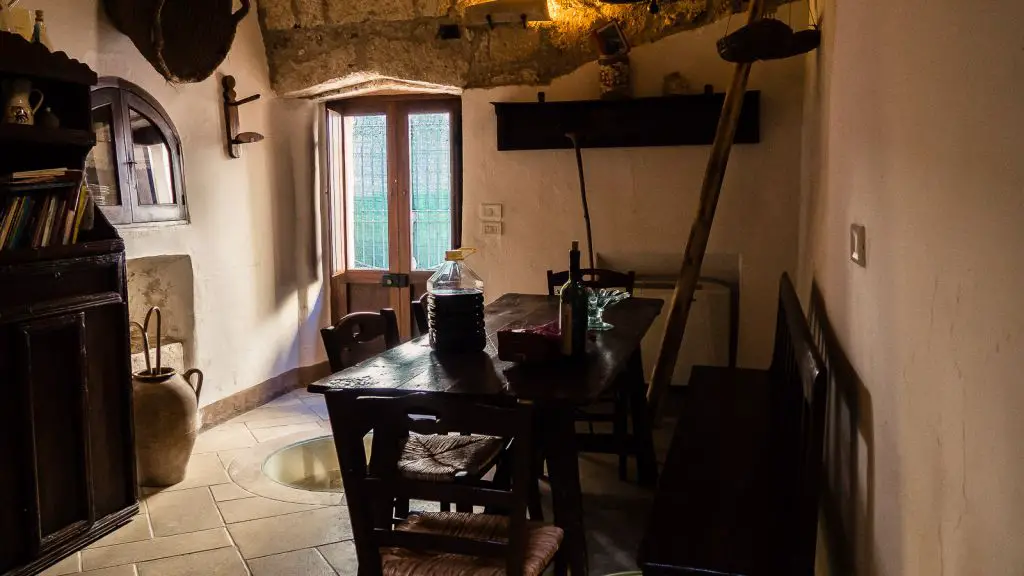




Day 5: Otranto and surrounding
Using Sternatia as our base for the day, we drove back towards the tip of Puglia to start the day starting at Spiaggia e Piscina Naturale di Marina Serra. We then made our way north through the lovely town of Otranto, Sant Andrea and Dell orso
Spiaggia e Piscina Naturale di Marina Serra
Starting from the Sanctuary of Santa Maria di Leuca and going up towards Otranto, the first stop must be made to Marina Serra. A few kilometers from Tricase , this pool seems to be enclosed within the walls of an ancient castle, thanks to the perfectly smooth shape of the cliff. The phenomenon is linked to the origin of this inlet, which derives from an ancient quarry.
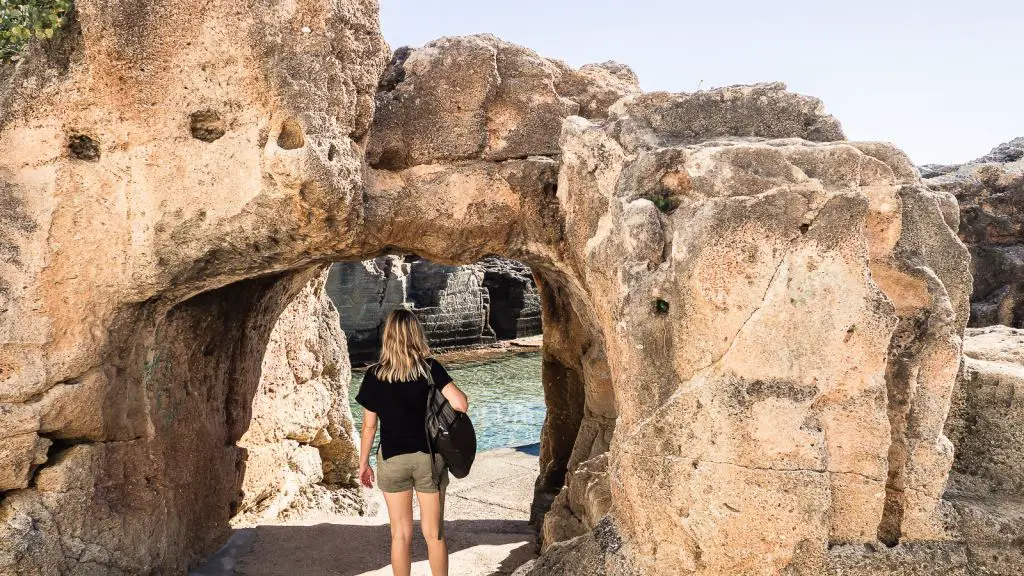
In addition to the particularly crystalline sea, what characterizes the natural pool of Marina Serra is the path necessary to get there, made up of steps and stone arches. Really suggestive. The seabed is low and easy even for the little ones who can spend time in the water in peace.
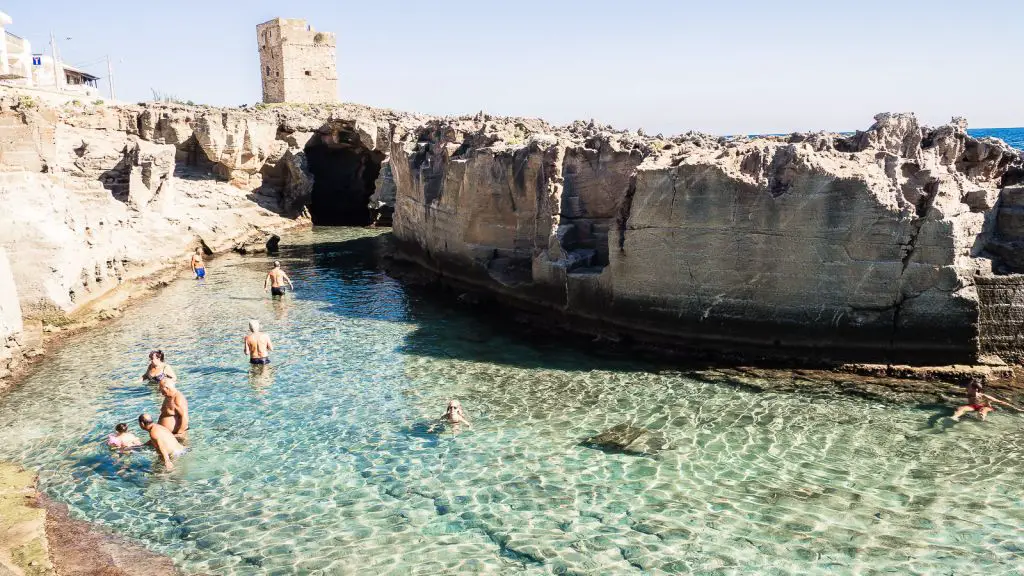
Otranto
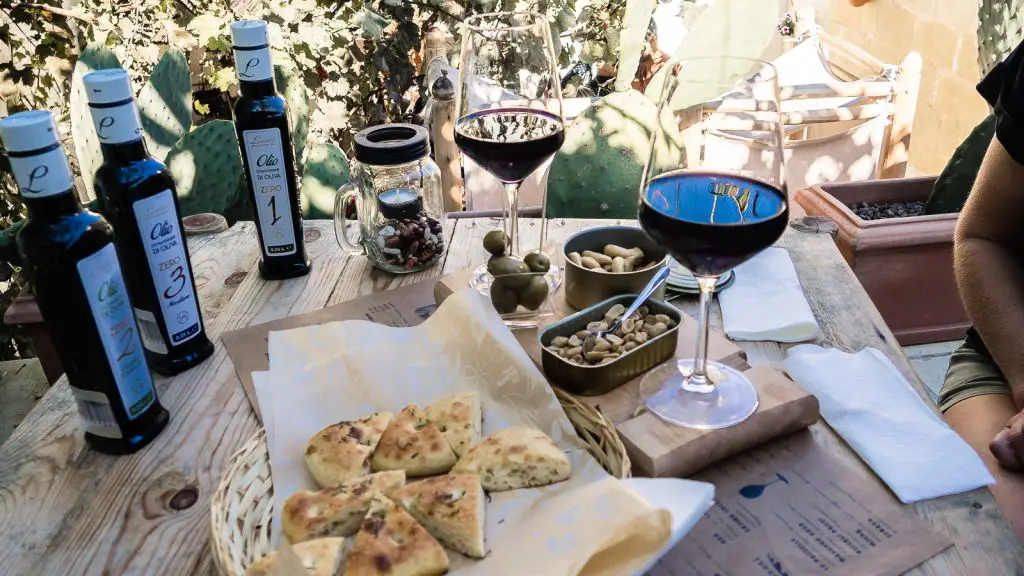

Otranto sits right on the Adriatic sea, gazing out across its eponymous strait towards the Balkans and Greece, a strategic position that has profoundly influenced its history. In Roman times, it became an important commercial port – there was a significant Jewish population of traders – but also a departure point for Roman military expeditions to the east, as testified to by two marble pillar bases recording the transient presence of Emperors Lucio Vero and Marco Aurelio. For a period Otranto even overshadowed Brindisi.

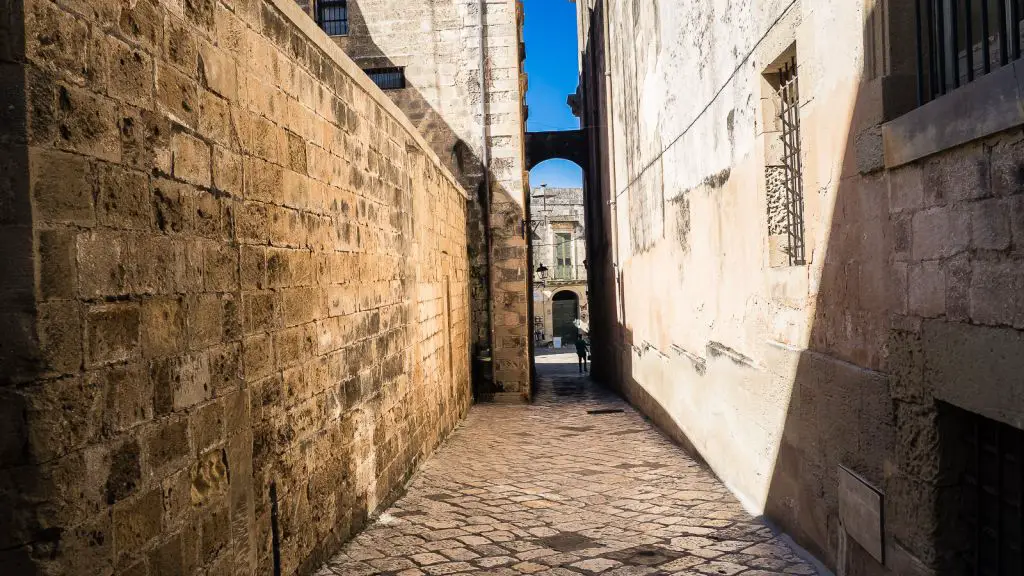
Otranto is certainly one of Puglia’s most charming towns and is well worth a visit. The imposing castle, thick perimeter walls and robust towers (built after the town was liberated from the Turks in the late 15th century) dominate much of the town, giving way to a small port, a series of sea-front promenades with excellent fish restaurants and the town’s very own beautiful white sandy beach and turquoise waters.
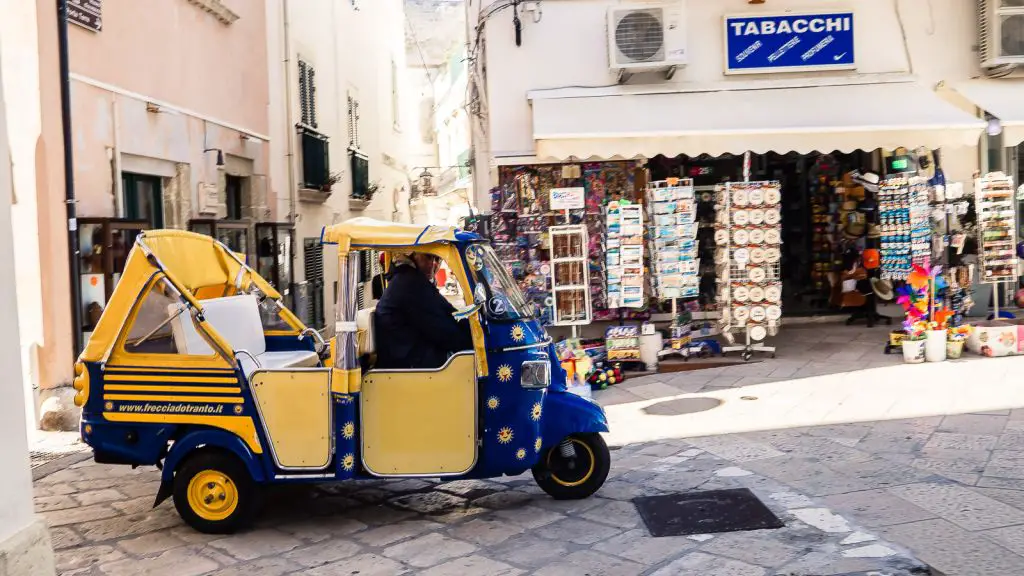
I didn’t know Italy had cities like Otranto. I felt like I was somewhere in the Caribbean instead of the Mediterranean. We stopped for some wine at an amazing wine bar in the old town called La Ortale. They had a beautiful garden in the back where you could sit and enjoy their local wine and olive oils.
Torre Sant’Andrea
Roughly 30 minutes from Otranto is the stunning grotto of Sant’Andrea. This one came equipped with turquoise waters, and huge rock formations protruding from the sea. The most famous sight here is probably the iconic arch that you can swim through.
We brought out the 5L gas station style wine which seemed to be never ending. But the view here is definitely worth a few glasses.
Caves of Poetry

Further north from Sant’Andrea are the famous Caves of Poetry, or Grotto della Poesia. It is said to have been a favorite swimming spot for an ancient princess, the sight of her swimming there inspired poets–thus the name Caves of Poetry. But visitors nowadays come mainly to take leaps from its 15′ cliffs into the clear waters, to scuba dive, swim from the sinkhole through an underground sea cave and back out to the sea. You can even rent a boat from nearby San Foca to get up close and personal to all the cliffs and grottoes in the area.
Day 6: Lecce
Lecce. Lecce is one of the bigger cities in Puglia, not as big as Bari of course, but it has an exciting old town and lots of beautiful monuments. We started right in the city centre, at the Anfiteatro Romano, the remains of a Roman amphitheatre. From there, we went through cute little alleys and were surrounded by typical Italian shops, as well as some touristy ones. If you enjoy nature more than houses, you should definitely stop at the Villa Comunale di Lecce, a park just next to the city centre which is perfect for a little stroll, a cup of ice cream or simply to relax.
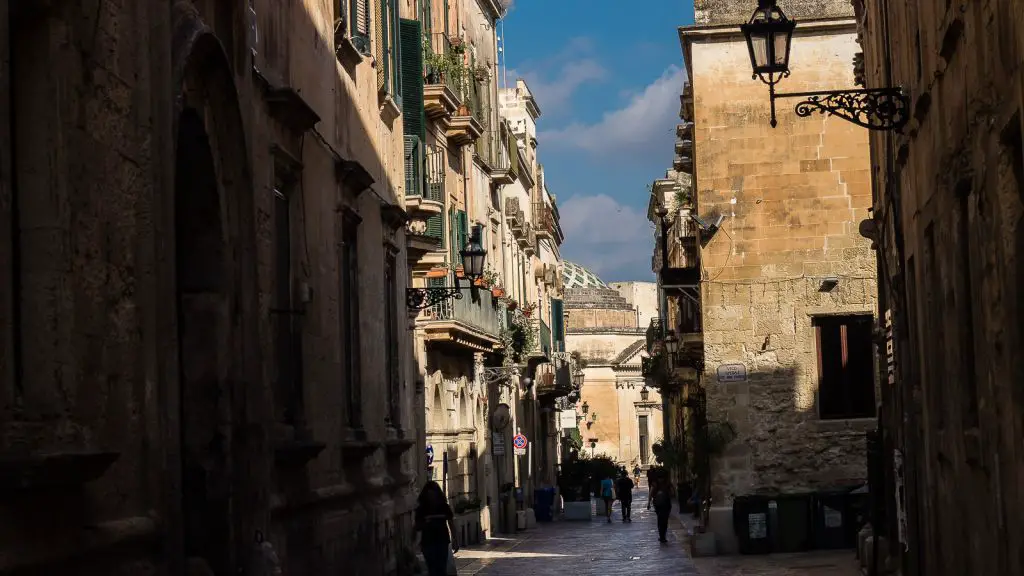
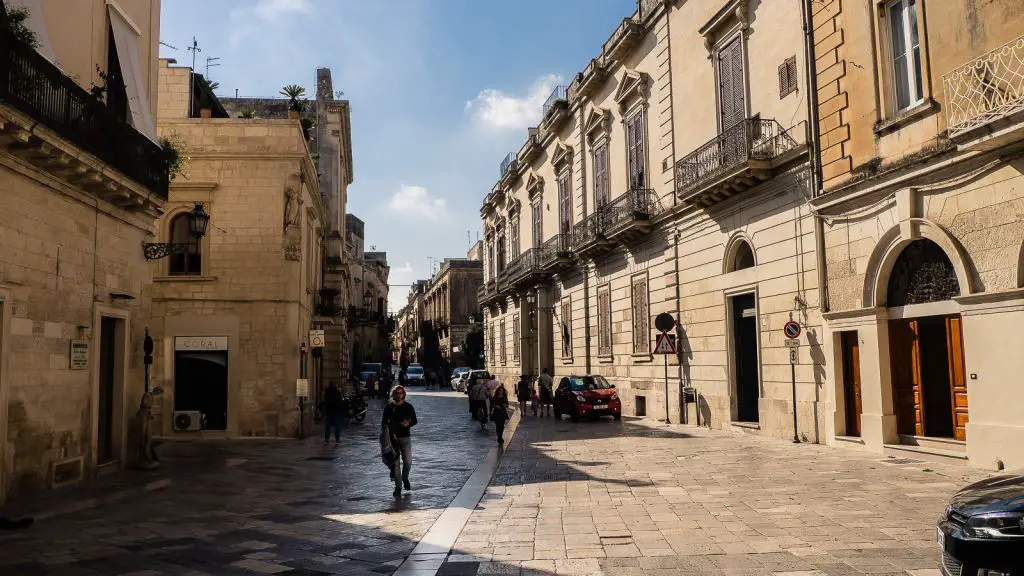
iazza del Duomo is a real treat, surrounded, as it is, by some delightful buildings. The Duomo itself was built originally in 1144 but with the arrival of the Baroque zealots in the mid-17th century it was given a facelift and a 70m-high bell tower was added for good measure.

The Basilica di Santa Croce has one of the finest and most intricate Baroque facades in Italy. The level of detail is quite stunning and the evident perfectionism of its creators most probably contributed to the building’s exceptionally long period of gestation: it took over 200 years to complete before it was finally opened for worship in 1695.
The Church of Saints Niccolo’ and Cataldo is a fascinating Norman church built by King Tancred of Sicily in 1180. The façade was significantly embellished with statues and other decorative art in the early 1700s, but the impressive original portal fortunately remained. The result is a fascinating mix of Norman austerity and Italianate Baroque fussiness.
Cafés, bars and restaurants flank the streets offering refreshments and front row seats from which to observe the comings and goings of the locals as they go about their daily business.
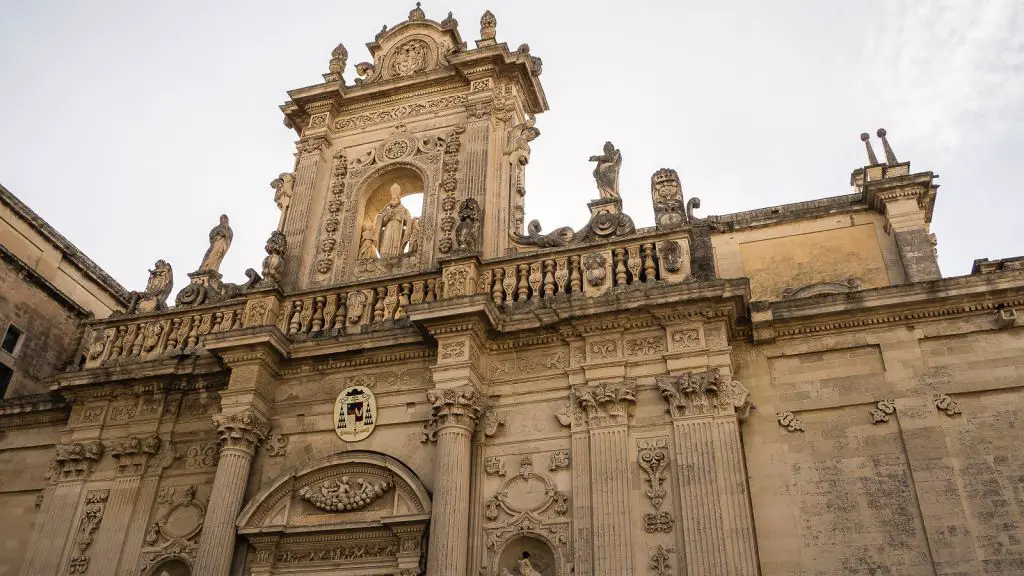
The Statue of Saint Oronzo: Saint Oronzo is the beloved patron saint of Lecce. The column from which his statue surveys the old town centre of Lecce was originally one of two that signalled the end of the Roman Via Appia in Brindisi. It arrived in Lecce in the 17th century as a gift from the people of Brindisi, who believed that their neighbour’s patron Saint had interceded on their behalf and save their town from the plague.
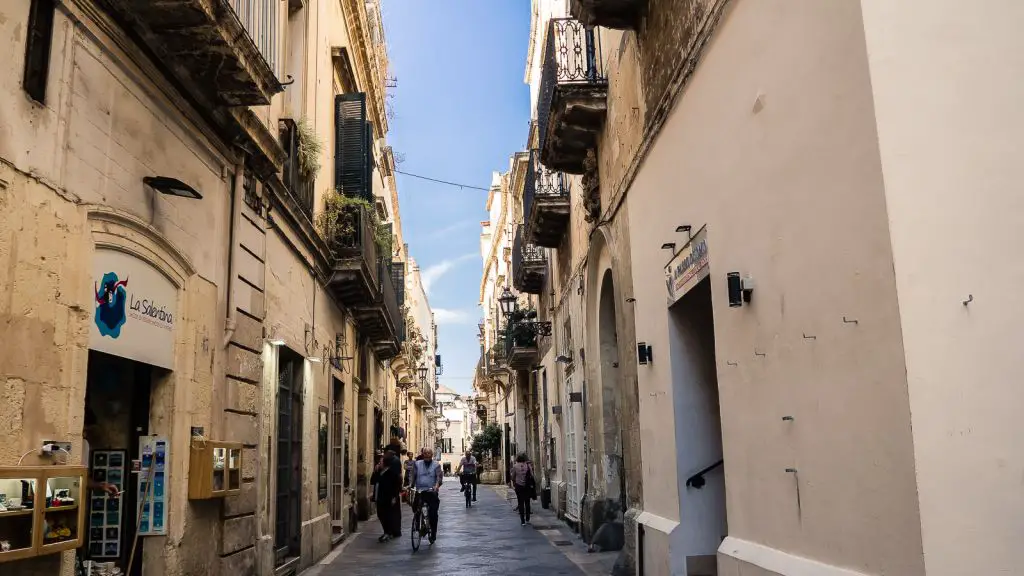
Under the gaze of Saint Oronzo’s statue is Lecce’s Roman amphitheatre, built at the end of the 2nd Century BC. A series of earthquakes, bombardments and unfortunate town-planning initiatives meant that it remained buried and forgotten until after the 2nd World War, when excavations began. About two thirds of the arena were uncovered and archaeologists have calculated that it would have measure some 100x80m with a capacity of around 25,000 spectators.
Il Castello di Carlo V: Charles V, Holy Roman Emperor and King of Spain (just two of his many titles), inherited vast swathes of Europe, including the south-east of Italy. Plagued by attacks from the bothersome Ottomans, he ordered a series of towers and fortifications to be built along the coast of Puglia. One such work was the castle in Lecce, built between 1539 and 1549 on the site of an existing Norman fortress. Its muscular ramparts belie the beauty of the interiors, which feature a delightful central courtyard and a series of halls decorated to suit the tastes of a Holy Roman Emperor. Today the castle plays host to cultural and artistic events.
Day by Day breakdown of my Puglia Itinerary
Here is a day by day breakdown of the Puglia itinerary. It’s pretty involved each day so absolutely feel free to spread it out over more days if you have the time!
Day 1: Land in Brindisi, visit Ostuni, overnight in Alberobello
Day 2: Matera in the morning, Pugliano de Mare and Monopoli in the afternoon
Day 3: Taranto in the morning, fill up wine in Manduria, drive along the coast towards Gallipoli.
Day 4: Visit beaches in the morning, Leuca for lunch, stay the night in Sternatia
Day 5: Drive along the coast from Leuca to Otranto
Day 6: Lecce in the morning, flight home from Brindisi
What I would do differently
There is so much to do in Puglia that the time I allocated to my trip was definitely not enough. If I had another 2 to 3 days I think that would have been perfect. I would have spent one night in Matera because I just think the stone city is so beautiful. This would have allowed me more time to explore Pugliano de Mare and Monopoli as well.
I would have spent another night in Gallipoli which would have allowed me more time to enjoy the beautiful beaches in the area. Finally, I would spend another night in Otranto because I found that city to be incredibly beautiful and picturesque. There’s so many combinations here that you can’t go wrong how you spend your time!




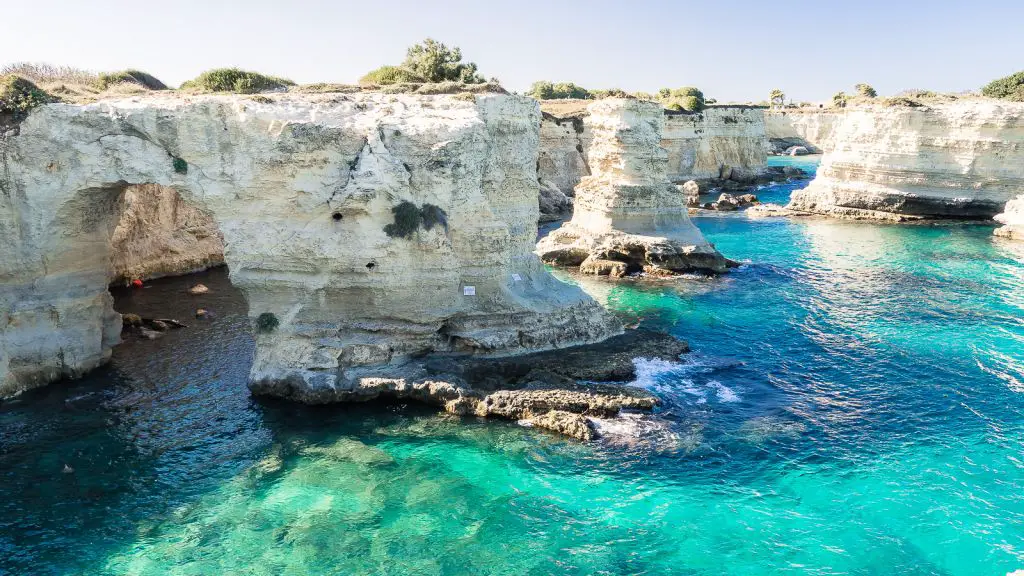


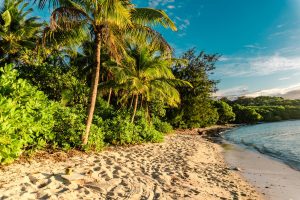


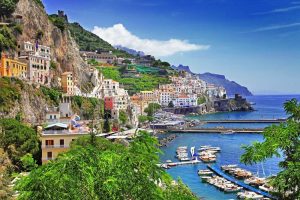
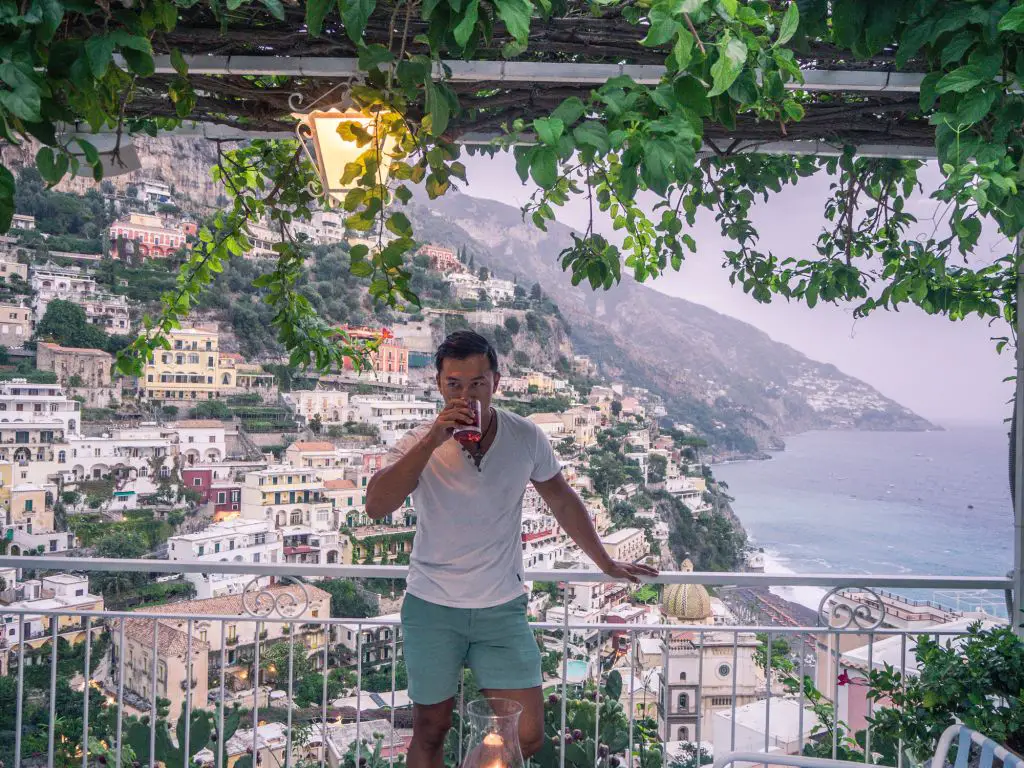
Thanks for the great blog! One question – you say the car was only 70 Euro?? That has to be a type right? Or is there some secret I don’t know of?
Hey Josh, It was indeed 70e when I booked the trip. I declined the insurance as well as just uesd my credit card’s insurance (but a huge deposit had to be blocked on my cc).
I think it was a combination of being in the offseason and in 2019. Nowadays, with supply chain issues and inflation, I think the days of ultra cheap car rentals are over in Europe (for the short to medium term at least).
Great article! Were you nervous about leaving luggage in the car while exploring the beach/town?
Hi Kim no was not worried at all! I suppose you can get unlucky sometimes but was no worried about it plus in October not many tourists
Hello Johnny
I read your very interestin post above and you are so interesting in your writing. the pictures are WOW . I’m cpming to this region in the middle of November and i wonder if to situated in Matera for several nights or it will be better atOtranto or Lecce. I don’t walk so well and i hesitate about Matera if it is not difficult to walk there every day. Knees problems.
By the way i’m also a blogger in Israel but i write in Hebrew.
Hi Rahel! I think matera would definitely be more walking than a town like ostuni or even alberobello. Lecce and Otranto are also great as they are more flat. The problem with matera is it’s all cobblestone roads which makes it even more difficult to walk on especially if it’s raining. I would def just do matera ona. Day trip or stay one night!
Hi Johnny,
Great blog thank you and great detail. We are planning to go in a couple of weeks, we have booked a hotel in Ostuni for 5 nights and a hotel in Gallipoli for 6 nights (one night in the middle where they couldn’t accommodate us so we can find somewhere to stay). Do you think if we are doing day trips those lengths of stay are appropriate in those places? Anywhere you would recommend us staying for the additional night? Also were wine bars easy to come by?
Cheers,
Callum
Hi Callum, I think you have plenty of time for day trips with that many nights. Might even be too much in the end! I think staying in Lecce for a night could be a good central spot to break it up?
Hi there! I am just starting to plan a Puglia trip for September 2022. Did you have any problems reading street/parking signs (or would an English speaker)? My husband and I are familiar with Spanish and Portuguese, but no Italian. Also, how was the availability of street parking? Thank you!
Hi Emily, yes all signs are pretty easy to follow if you don’t speak Italian. Most of htem are in English as well from what I can remember. Street parking is just a crapshoot like everywhere else in Italy! Sometimes you get lucky, sometimes not so much. The paid parking is quite cheap all over Puglia so many times I just opted for this to save me time and frustration
Hey Johnny….how about some packing advice. We are headed to Apulia in early Nov. It looks like you were there in Oct. Tell me about the weather….
Hi Deborah, I was there just three weeks before you and the weather was mostly sunny and warm throughout the trip. I think at night it got a ltitle chilly but nothing that a light jacket couldn’t help with. I think you should prepare for 20-25 degrees during the day and 10-15 at night. Enjoy!
Hi Johnny, I just read your post and am really so grateful. I just moved to Italy from tbe Caribbean. Would you say its safe for a single, female to go around Puglia and do “your” itinerary? Also…if I dont drive is it doable by public transport? Thanks SO much!
Rachel
Hi Rachel, glad it is helping you plan your trip! Yes I think Puglia is very safe even in the bigger cities and it’s totally doable solo. There are trains that connect the main cities in Puglia but if you want to go to the smaller placesl ike Alberobello or Ostuni then a bus is the best way to go. There are plenty of buses that will take you to these smaller towns so that shouldn’t be an issue. However, if you want to go to the beaches on the south side of Puglia, you’ll probably need a car. Hope that helps!
Hi Johnny! I absolutely enjoyed your blog. I read it from top to bottom and will follow it when we head to Puglia in June/July. I know its tourist season but that’s when the kids are off school. From other bloggers, I read that many of the beaches are “Lido” meaning there’s an entrance fee and other things you have to pay for. Was that your experience as well? What do you recommend in terms of exchanging currency? We are coming from the US. Thanks!
Hi Teresa! Glad it ccould be of help to you!! I visited during kind of the off season but I never noticed any places that were pay to enter. It could be different in the summers but I just feel like there’s no way they could set up any sort of entrance gate from the places I went to unless they literally make and take down gates every year.
No need for cash really. Everyone uses card, and the only time I used cash was for parking, but even then those machines accepted card.
Hi there. Just read your blog about Puglia. We are going in September and will have a car but only 5 days there. What should we absolutely see and where should we stay? Thanks very much
Hi debby, I only had 6 days so you have a similar amount of time as me. I’d just go through the article and see which places had the most wow factor for you and plan it that way!
Thanks very much! We will be driving from Sorrento so thinking of Matera the first night and then on from there. Is there a good central location we could stay for 4 nights and take day trips?
Hey debby, that’s a good idea for Matera, otherwise I’d probably choose Lecce or ostuni for a central place close to all the main sights. Both cities were quite beautiful as well!